👆 View a 3-minute video on how to use the Digital Learning Curriculum in your classroom.
Digital Skills Curriculum for Secondary Schools
Our curriculum supports the development of critical digital skills such as coding and robotics, preparing students for the future and fostering their growth as engaged, global digital citizens.
- From 1st to 6th Year
- Teacher guides & lesson plans
- Aligned with the Junior & Senior Cycle Curriculum
Trusted by Hundreds of Irish Schools
.jpg)
Robertson NS
Donegal
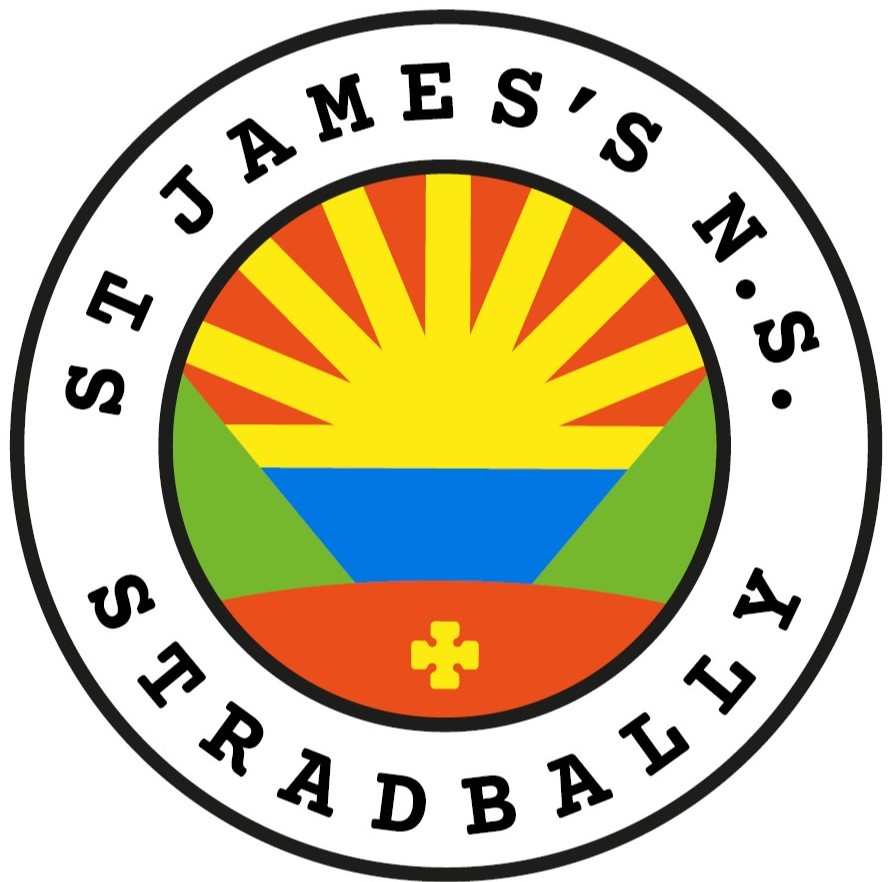
St James's NS
Waterford

Lower Glanmire NS
Cork
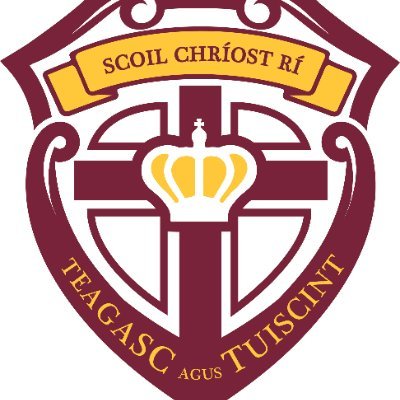
Christ The King BNS
Limerick
.png)
Tseachtar Laoch NS
Dublin
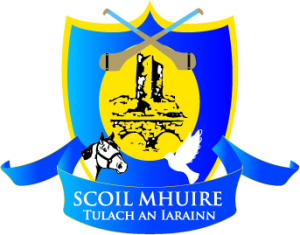
Tallow NS
Waterford
.png)
Kilcoole Primary School
Wicklow
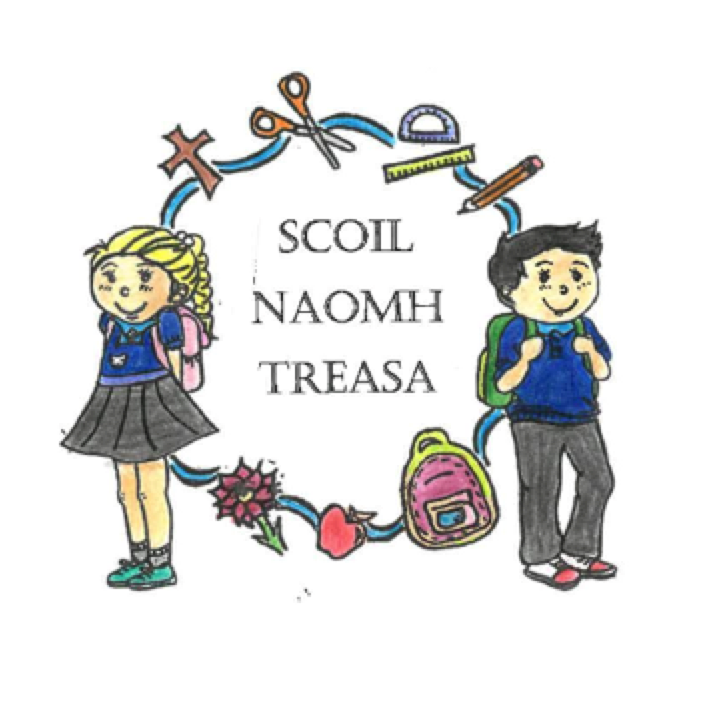
Ballyroe Central Ns
Kildare

Camolin NS
Wexford
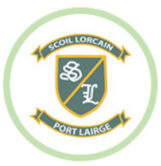
Scoil Lorcain B.N.S.
Waterford
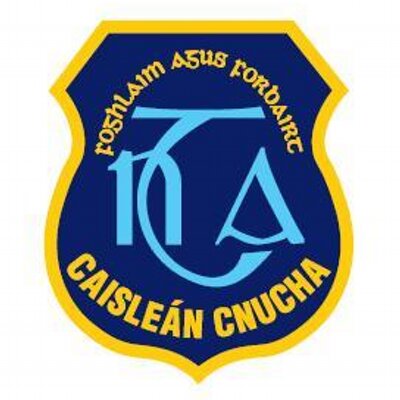
Scoil Thomais
Dublin

Carndonagh Boys NS
Donegal

Scoil Raifteiri
Mayo
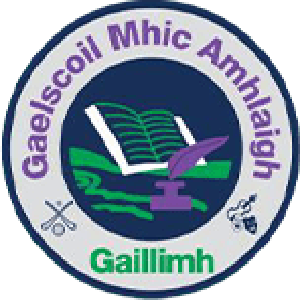
Gaelscoil Mhic Amhlaigh
Galway
.png)
Gaelscoil Durlas
Tipperary
.png)
Dangan Mxd Ns
Meath
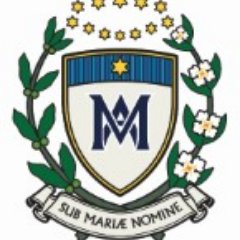
Holy Family N.S.
Sligo

Letterkenny Educate Together
Donegal
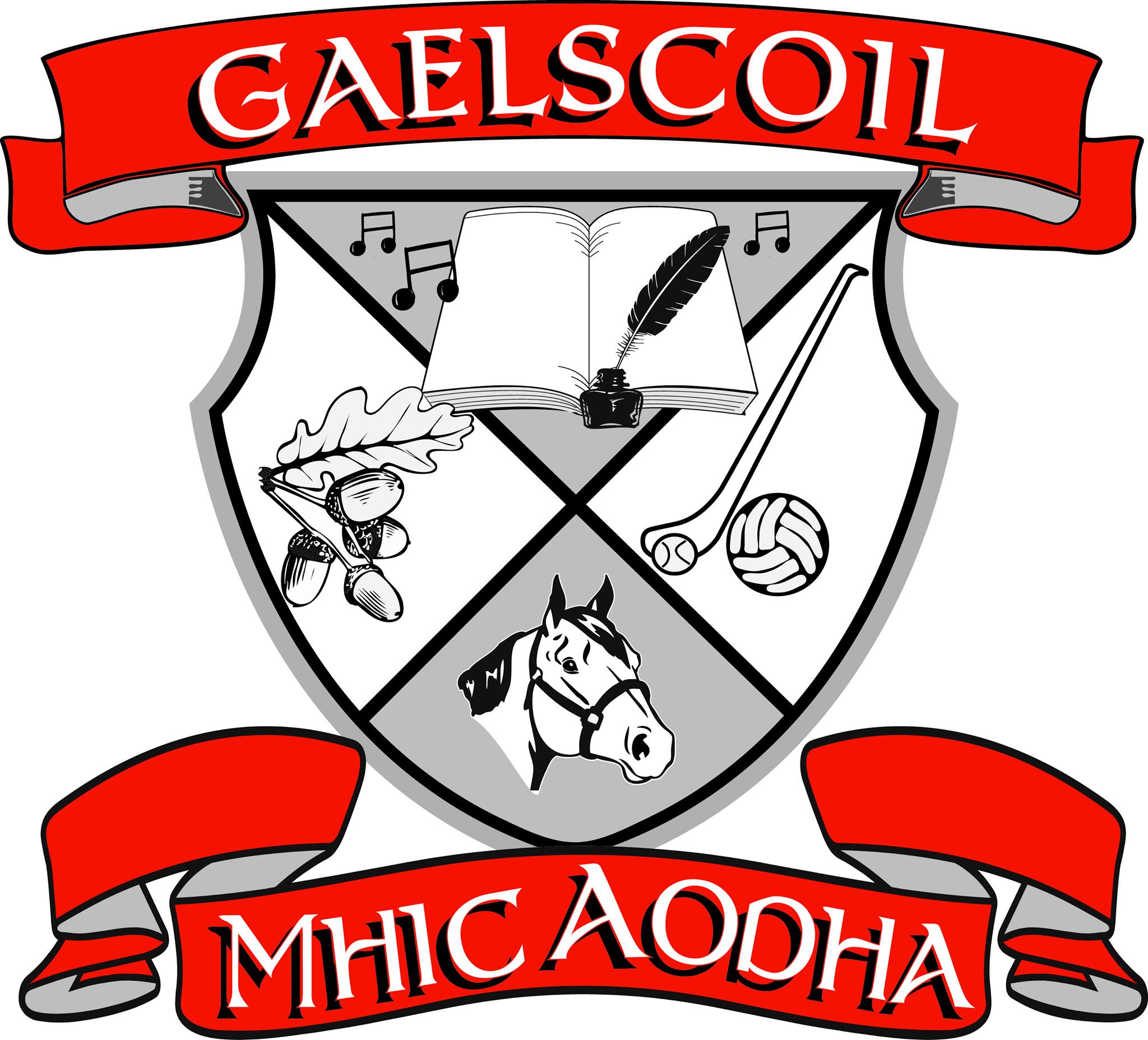
Gaelscoil Mhic Aodha
Kildare
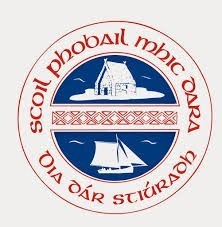
Scoil Mhic Dara
Galway
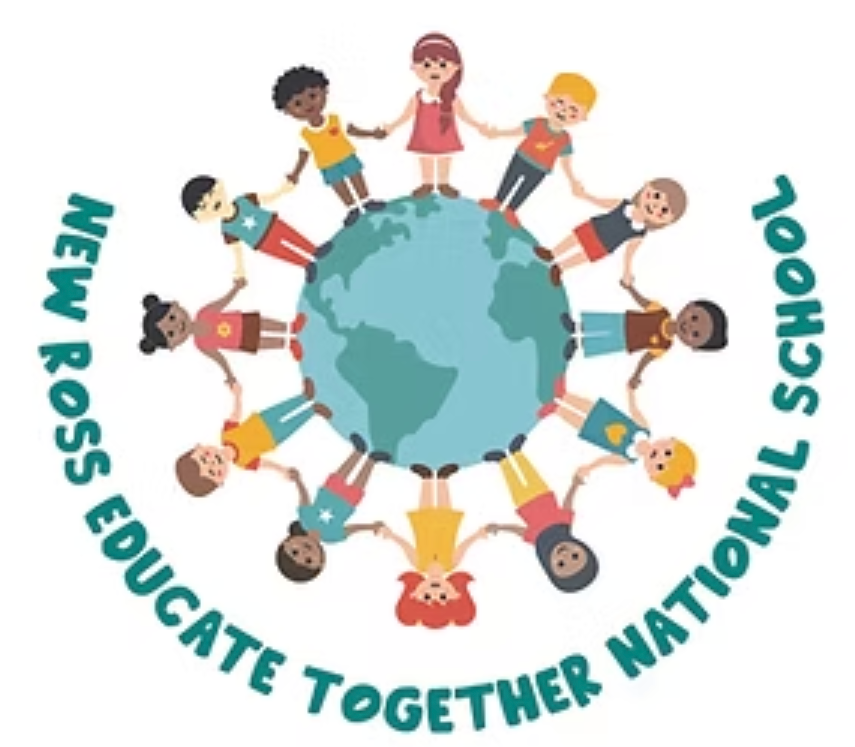
New Ross Educate Together National School
Wexford

St Fergus Primary School
Limerick
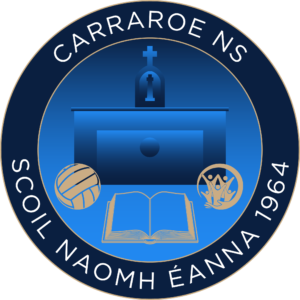
Carraroe NS
Sligo
.png)
Gaelscoil Inis Corthaidh
Wexford

St Josephs NS
Louth
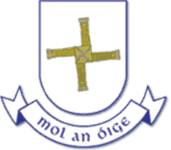
Scoil Bhride NS
Laois
.png)
St Baithins NS
Donegal
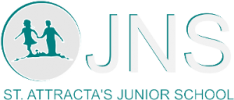
St Attractas Junior NS
Dublin
.png)
St John's SNS
Wicklow
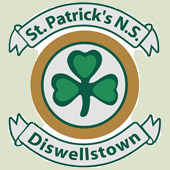
St Patricks NS
Dublin
Four Key Elements for Science, Technology and Engineering Education
Exploring & understanding
Collaboration, Curiosity, Discovery
Creative & critical thinking
Play, Innovation, Risk-taking
Problem-Solving & applying
Collaboration, Creativity, Resilience
Evaluating & communicating
Analysis, Communication, Feedback
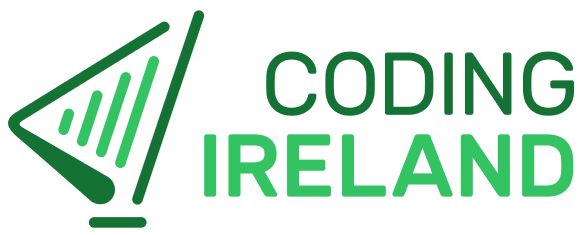
Digital Skills Curriculum
2024/25 Edition€12 per student, includes student access & teacher resources.
Get started for 2024/25 View a quick 3 min video Info Sheet FAQsDigital Skills Curriculum
1st Year
Introduction Module
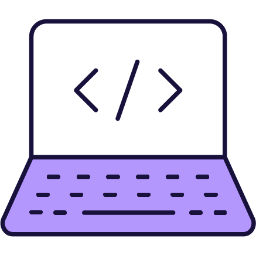
Introduction to Scratch Programming
Introduction to Programming
Student Devices
To do this module, students will need to use either of these devices:
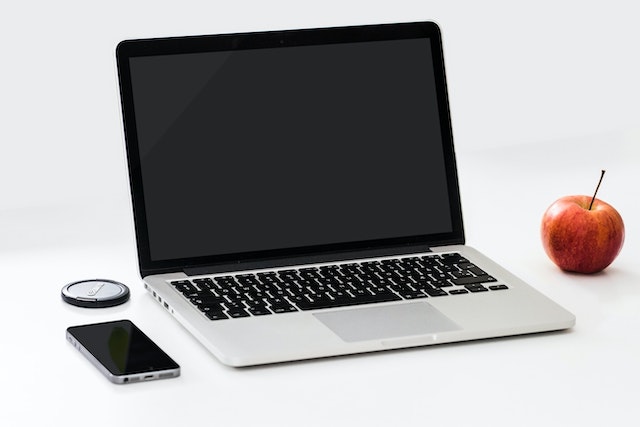 Chromebooks, laptops, and PCs are crucial tools for coding and digital skills education. Chromebooks are ideal for web-based applications and collaborative projects, while laptops and PCs support a wider range of programming environments and software for more intensive tasks like software development and data analysis.
Chromebooks, laptops, and PCs are crucial tools for coding and digital skills education. Chromebooks are ideal for web-based applications and collaborative projects, while laptops and PCs support a wider range of programming environments and software for more intensive tasks like software development and data analysis.Equipped with full keyboards and the ability to run specialized coding software, these devices enable students to learn programming languages, debug code, and understand software architecture. Their versatility supports both individual learning and group projects, making them indispensable for developing critical digital and computational thinking skills in the classroom.

iPads and tablets are versatile, portable computing devices that offer a wide range of educational applications in the classroom. Featuring touch-sensitive screens ranging from 7 to 13 inches, these devices allow students and teachers to interact directly with content through touch, swipe, and voice commands.
If necessary, students can work in groups (ideally in a group of 2 or 3 students) and use one device between them.
Module 1
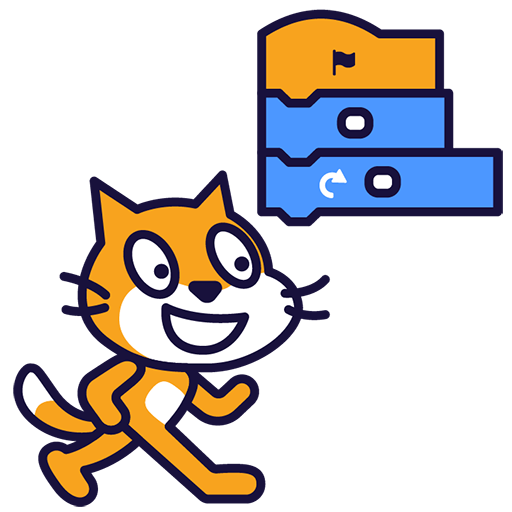
Coding Projects with Scratch
Developing Interactive Projects
Student Devices
To do this module, students will need to use either of these devices:
 Chromebooks, laptops, and PCs are crucial tools for coding and digital skills education. Chromebooks are ideal for web-based applications and collaborative projects, while laptops and PCs support a wider range of programming environments and software for more intensive tasks like software development and data analysis.
Chromebooks, laptops, and PCs are crucial tools for coding and digital skills education. Chromebooks are ideal for web-based applications and collaborative projects, while laptops and PCs support a wider range of programming environments and software for more intensive tasks like software development and data analysis.Equipped with full keyboards and the ability to run specialized coding software, these devices enable students to learn programming languages, debug code, and understand software architecture. Their versatility supports both individual learning and group projects, making them indispensable for developing critical digital and computational thinking skills in the classroom.

iPads and tablets are versatile, portable computing devices that offer a wide range of educational applications in the classroom. Featuring touch-sensitive screens ranging from 7 to 13 inches, these devices allow students and teachers to interact directly with content through touch, swipe, and voice commands.
If necessary, students can work in groups (ideally in a group of 2 or 3 students) and use one device between them.
Module 2
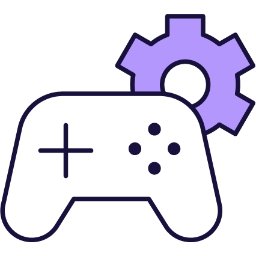
Game Development
Learn about game development and create your own arcade games.
Student Devices
To do this module, students will need to use either of these devices:
 Chromebooks, laptops, and PCs are crucial tools for coding and digital skills education. Chromebooks are ideal for web-based applications and collaborative projects, while laptops and PCs support a wider range of programming environments and software for more intensive tasks like software development and data analysis.
Chromebooks, laptops, and PCs are crucial tools for coding and digital skills education. Chromebooks are ideal for web-based applications and collaborative projects, while laptops and PCs support a wider range of programming environments and software for more intensive tasks like software development and data analysis.Equipped with full keyboards and the ability to run specialized coding software, these devices enable students to learn programming languages, debug code, and understand software architecture. Their versatility supports both individual learning and group projects, making them indispensable for developing critical digital and computational thinking skills in the classroom.

iPads and tablets are versatile, portable computing devices that offer a wide range of educational applications in the classroom. Featuring touch-sensitive screens ranging from 7 to 13 inches, these devices allow students and teachers to interact directly with content through touch, swipe, and voice commands.
If necessary, students can work in groups (ideally in a group of 2 or 3 students) and use one device between them.
Module 3

Coding Projects with Microbits
Introduction to Microbits
Student Devices
To do this module, students will need to use either of these devices:
 Chromebooks, laptops, and PCs are crucial tools for coding and digital skills education. Chromebooks are ideal for web-based applications and collaborative projects, while laptops and PCs support a wider range of programming environments and software for more intensive tasks like software development and data analysis.
Chromebooks, laptops, and PCs are crucial tools for coding and digital skills education. Chromebooks are ideal for web-based applications and collaborative projects, while laptops and PCs support a wider range of programming environments and software for more intensive tasks like software development and data analysis.Equipped with full keyboards and the ability to run specialized coding software, these devices enable students to learn programming languages, debug code, and understand software architecture. Their versatility supports both individual learning and group projects, making them indispensable for developing critical digital and computational thinking skills in the classroom.
If necessary, students can work in groups (ideally in a group of 2 or 3 students) and use one device between them.
Lesson Equipment
Students will need to use the following equipment and can share if necessary.

The BBC microbit is a pocket-sized codeable computer with motion detection, a built-in compass and Bluetooth technology.
The board measures 4 cm × 5 cm and has a processor, accelerometer and magnetometer sensors, Bluetooth and USB connectivity, a display consisting of 25 LEDs, two programmable buttons, and can be powered by either USB or an external battery pack.
The list of things you can program the Microbit to do is nearly endless. You can program the buttons, LEDs and different sensors to create games and turn the Microbit into things like a pedometer, a compass or even a musical instrument.
Coding Ireland can provide full classroom kits, please provide student numbers to get a quote.
Module 6
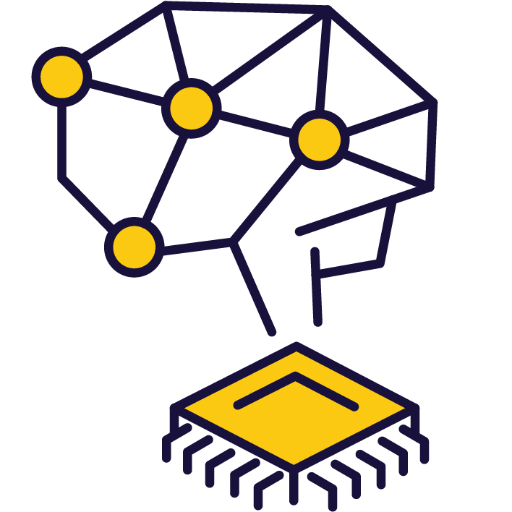
Discovering Artificial Intelligence
Discover AI and learn how to program it using Scratch.
Student Devices
To do this module, students will need to use either of these devices:
 Chromebooks, laptops, and PCs are crucial tools for coding and digital skills education. Chromebooks are ideal for web-based applications and collaborative projects, while laptops and PCs support a wider range of programming environments and software for more intensive tasks like software development and data analysis.
Chromebooks, laptops, and PCs are crucial tools for coding and digital skills education. Chromebooks are ideal for web-based applications and collaborative projects, while laptops and PCs support a wider range of programming environments and software for more intensive tasks like software development and data analysis.Equipped with full keyboards and the ability to run specialized coding software, these devices enable students to learn programming languages, debug code, and understand software architecture. Their versatility supports both individual learning and group projects, making them indispensable for developing critical digital and computational thinking skills in the classroom.

iPads and tablets are versatile, portable computing devices that offer a wide range of educational applications in the classroom. Featuring touch-sensitive screens ranging from 7 to 13 inches, these devices allow students and teachers to interact directly with content through touch, swipe, and voice commands.
If necessary, students can work in groups (ideally in a group of 2 or 3 students) and use one device between them.
Lesson Equipment
Students will need to use the following equipment and can share if necessary.
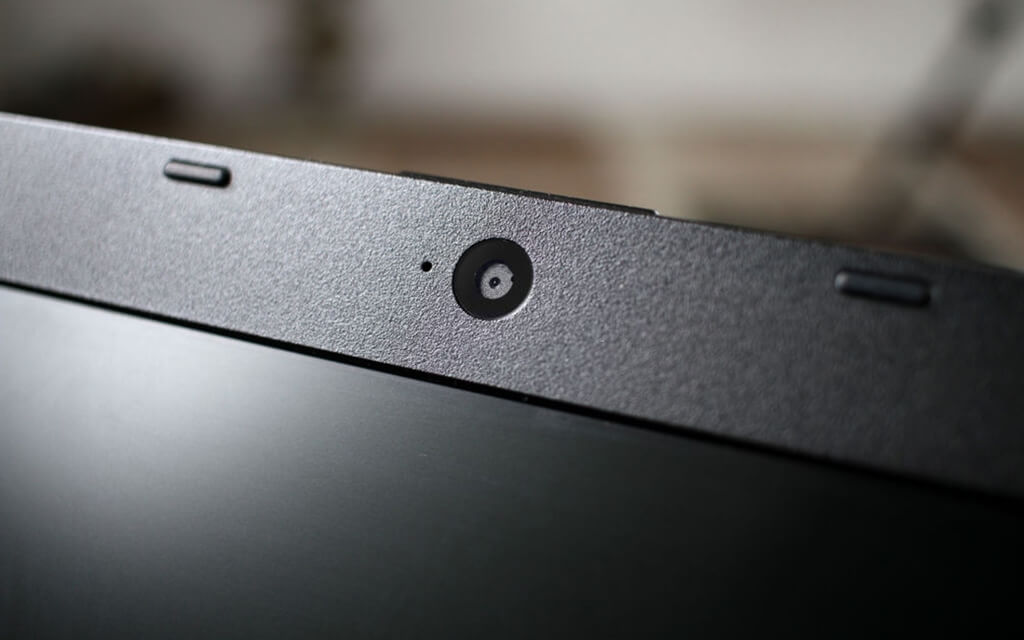
A webcam is a small digital camera, either standalone or built into a computer, used for taking videos and images.
Most modern iPads, tablets, laptops and Chromebooks have cameras built into them.
Coding Ireland can provide full classroom kits, please provide student numbers to get a quote.
2nd Year
Introduction Module
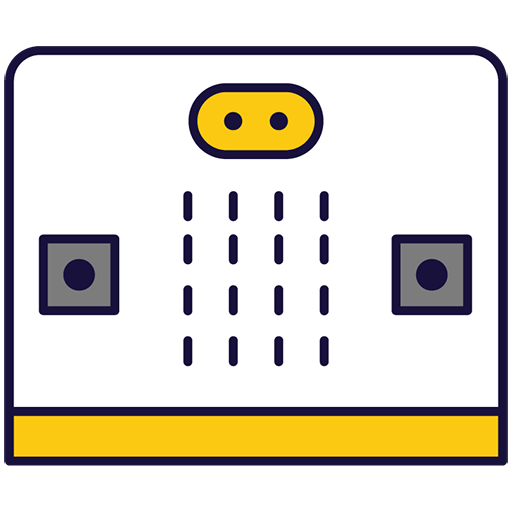
Introduction to Microbit Programming
Basic Programming Skills
Student Devices
To do this module, students will need to use either of these devices:
 Chromebooks, laptops, and PCs are crucial tools for coding and digital skills education. Chromebooks are ideal for web-based applications and collaborative projects, while laptops and PCs support a wider range of programming environments and software for more intensive tasks like software development and data analysis.
Chromebooks, laptops, and PCs are crucial tools for coding and digital skills education. Chromebooks are ideal for web-based applications and collaborative projects, while laptops and PCs support a wider range of programming environments and software for more intensive tasks like software development and data analysis.Equipped with full keyboards and the ability to run specialized coding software, these devices enable students to learn programming languages, debug code, and understand software architecture. Their versatility supports both individual learning and group projects, making them indispensable for developing critical digital and computational thinking skills in the classroom.
If necessary, students can work in groups (ideally in a group of 2 or 3 students) and use one device between them.
Lesson Equipment
Students will need to use the following equipment and can share if necessary.

The BBC microbit is a pocket-sized codeable computer with motion detection, a built-in compass and Bluetooth technology.
The board measures 4 cm × 5 cm and has a processor, accelerometer and magnetometer sensors, Bluetooth and USB connectivity, a display consisting of 25 LEDs, two programmable buttons, and can be powered by either USB or an external battery pack.
The list of things you can program the Microbit to do is nearly endless. You can program the buttons, LEDs and different sensors to create games and turn the Microbit into things like a pedometer, a compass or even a musical instrument.
Coding Ireland can provide full classroom kits, please provide student numbers to get a quote.
Module 4

Game Design Essentials
Game Development
Student Devices
To do this module, students will need to use either of these devices:
 Chromebooks, laptops, and PCs are crucial tools for coding and digital skills education. Chromebooks are ideal for web-based applications and collaborative projects, while laptops and PCs support a wider range of programming environments and software for more intensive tasks like software development and data analysis.
Chromebooks, laptops, and PCs are crucial tools for coding and digital skills education. Chromebooks are ideal for web-based applications and collaborative projects, while laptops and PCs support a wider range of programming environments and software for more intensive tasks like software development and data analysis.Equipped with full keyboards and the ability to run specialized coding software, these devices enable students to learn programming languages, debug code, and understand software architecture. Their versatility supports both individual learning and group projects, making them indispensable for developing critical digital and computational thinking skills in the classroom.

iPads and tablets are versatile, portable computing devices that offer a wide range of educational applications in the classroom. Featuring touch-sensitive screens ranging from 7 to 13 inches, these devices allow students and teachers to interact directly with content through touch, swipe, and voice commands.
If necessary, students can work in groups (ideally in a group of 2 or 3 students) and use one device between them.
Module 1
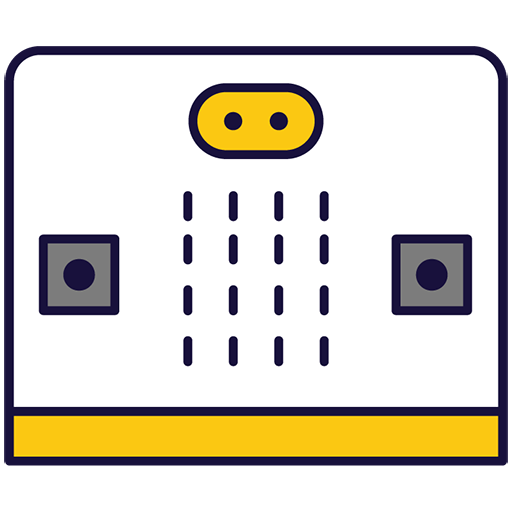
Applied Microbit Programming
Deepening Microbit Programming Skills
Student Devices
To do this module, students will need to use either of these devices:
 Chromebooks, laptops, and PCs are crucial tools for coding and digital skills education. Chromebooks are ideal for web-based applications and collaborative projects, while laptops and PCs support a wider range of programming environments and software for more intensive tasks like software development and data analysis.
Chromebooks, laptops, and PCs are crucial tools for coding and digital skills education. Chromebooks are ideal for web-based applications and collaborative projects, while laptops and PCs support a wider range of programming environments and software for more intensive tasks like software development and data analysis.Equipped with full keyboards and the ability to run specialized coding software, these devices enable students to learn programming languages, debug code, and understand software architecture. Their versatility supports both individual learning and group projects, making them indispensable for developing critical digital and computational thinking skills in the classroom.
If necessary, students can work in groups (ideally in a group of 2 or 3 students) and use one device between them.
Lesson Equipment
Students will need to use the following equipment and can share if necessary.

The BBC microbit is a pocket-sized codeable computer with motion detection, a built-in compass and Bluetooth technology.
The board measures 4 cm × 5 cm and has a processor, accelerometer and magnetometer sensors, Bluetooth and USB connectivity, a display consisting of 25 LEDs, two programmable buttons, and can be powered by either USB or an external battery pack.
The list of things you can program the Microbit to do is nearly endless. You can program the buttons, LEDs and different sensors to create games and turn the Microbit into things like a pedometer, a compass or even a musical instrument.
Coding Ireland can provide full classroom kits, please provide student numbers to get a quote.
Module 2

Introduction to HTML and CSS
Building Web Pages
Student Devices
To do this module, students will need to use either of these devices:
 Chromebooks, laptops, and PCs are crucial tools for coding and digital skills education. Chromebooks are ideal for web-based applications and collaborative projects, while laptops and PCs support a wider range of programming environments and software for more intensive tasks like software development and data analysis.
Chromebooks, laptops, and PCs are crucial tools for coding and digital skills education. Chromebooks are ideal for web-based applications and collaborative projects, while laptops and PCs support a wider range of programming environments and software for more intensive tasks like software development and data analysis.Equipped with full keyboards and the ability to run specialized coding software, these devices enable students to learn programming languages, debug code, and understand software architecture. Their versatility supports both individual learning and group projects, making them indispensable for developing critical digital and computational thinking skills in the classroom.

iPads and tablets are versatile, portable computing devices that offer a wide range of educational applications in the classroom. Featuring touch-sensitive screens ranging from 7 to 13 inches, these devices allow students and teachers to interact directly with content through touch, swipe, and voice commands.
If necessary, students can work in groups (ideally in a group of 2 or 3 students) and use one device between them.
Module 3
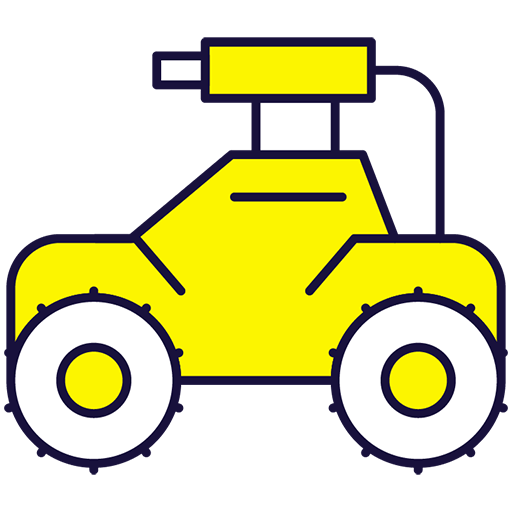
Driving Innovation with Microbits and Cars
Applying Coding to Hardware
Student Devices
To do this module, students will need to use either of these devices:
 Chromebooks, laptops, and PCs are crucial tools for coding and digital skills education. Chromebooks are ideal for web-based applications and collaborative projects, while laptops and PCs support a wider range of programming environments and software for more intensive tasks like software development and data analysis.
Chromebooks, laptops, and PCs are crucial tools for coding and digital skills education. Chromebooks are ideal for web-based applications and collaborative projects, while laptops and PCs support a wider range of programming environments and software for more intensive tasks like software development and data analysis.Equipped with full keyboards and the ability to run specialized coding software, these devices enable students to learn programming languages, debug code, and understand software architecture. Their versatility supports both individual learning and group projects, making them indispensable for developing critical digital and computational thinking skills in the classroom.
If necessary, students can work in groups (ideally in a group of 2 or 3 students) and use one device between them.
Lesson Equipment
Students will need to use the following equipment and can share if necessary.

The BBC microbit is a pocket-sized codeable computer with motion detection, a built-in compass and Bluetooth technology.
The board measures 4 cm × 5 cm and has a processor, accelerometer and magnetometer sensors, Bluetooth and USB connectivity, a display consisting of 25 LEDs, two programmable buttons, and can be powered by either USB or an external battery pack.
The list of things you can program the Microbit to do is nearly endless. You can program the buttons, LEDs and different sensors to create games and turn the Microbit into things like a pedometer, a compass or even a musical instrument.
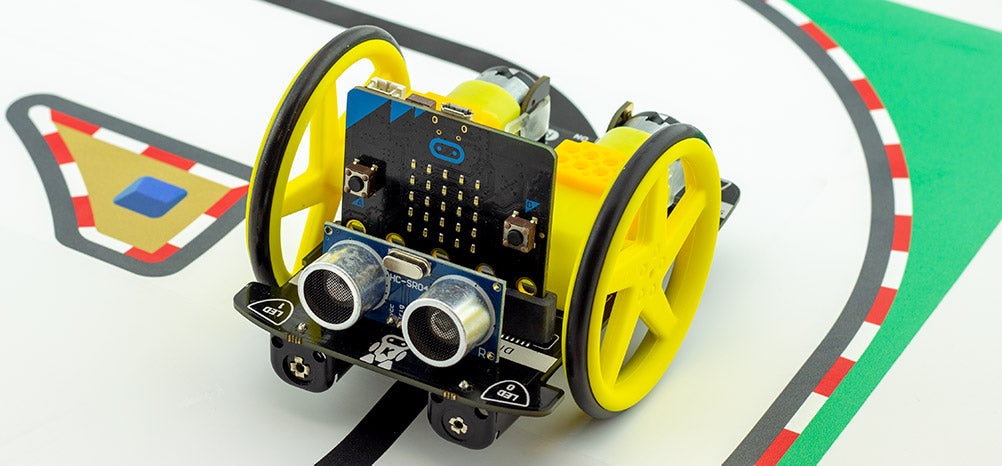
The Move Motor Car is a versatile, programmable vehicle that is powered and controlled by the micro:bit, a pocket-sized computer.
This car has motorized wheels and a variety of sensors, allowing students to create and test different robotics and coding projects. By connecting a micro:bit to the car, students can use the MakeCode platform to program the vehicle's movements, speed, and responses to sensor inputs. This provides an engaging and hands-on way for students to learn about coding, robotics, and engineering concepts.
Whether it's navigating through a maze, following a line on the ground, or responding to obstacles, the Move Motor Sensor Car offers endless opportunities for creativity and problem-solving. Perfect for classroom activities, it allows students to explore STEM concepts in an interactive and enjoyable way.

The Move Motor Klaw is a robotic accessory designed to be attached to motorized vehicles, like the Move Motor Robot Car.
This mechanical claw can be programmed to open and close, allowing it to pick up, hold, or move objects. By integrating it with a micro:bit and using the MakeCode platform, students can code the Klaw to perform specific actions, such as grabbing items or completing simple tasks. Ideal for classroom projects, the Move Motor Klaw offers students a hands-on way to explore robotics, engineering, and coding, enhancing their problem-solving and creative skills.
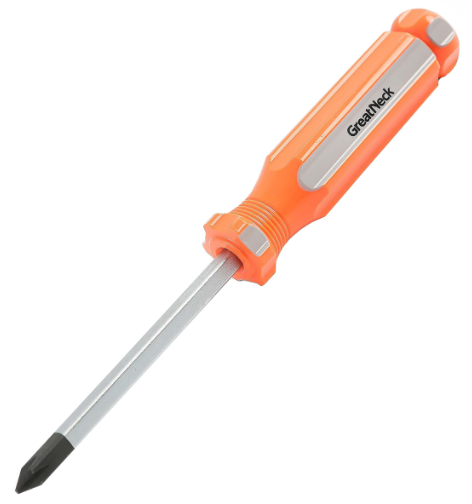
A Phillips screwdriver is a hand tool with a cross-shaped tip, designed to drive screws with a matching recessed cross or "Phillips" head. It's commonly used in a wide range of applications, including assembly and repair of appliances, electronics, and furniture. Essential for many classroom projects, it helps students learn practical skills and safely connect components.

The STOP:bit for the BBC micro:bit is the ultimate upgrade for traffic light/pedestrian crossing projects. It is a bolt-on/clip-on board for the BBC micro:bit replicating a traffic light.
Coding Ireland can provide full classroom kits, please provide student numbers to get a quote.
Module 6

Discovering Artificial Intelligence
Discover AI and learn how to program it using Scratch.
Student Devices
To do this module, students will need to use either of these devices:
 Chromebooks, laptops, and PCs are crucial tools for coding and digital skills education. Chromebooks are ideal for web-based applications and collaborative projects, while laptops and PCs support a wider range of programming environments and software for more intensive tasks like software development and data analysis.
Chromebooks, laptops, and PCs are crucial tools for coding and digital skills education. Chromebooks are ideal for web-based applications and collaborative projects, while laptops and PCs support a wider range of programming environments and software for more intensive tasks like software development and data analysis.Equipped with full keyboards and the ability to run specialized coding software, these devices enable students to learn programming languages, debug code, and understand software architecture. Their versatility supports both individual learning and group projects, making them indispensable for developing critical digital and computational thinking skills in the classroom.

iPads and tablets are versatile, portable computing devices that offer a wide range of educational applications in the classroom. Featuring touch-sensitive screens ranging from 7 to 13 inches, these devices allow students and teachers to interact directly with content through touch, swipe, and voice commands.
If necessary, students can work in groups (ideally in a group of 2 or 3 students) and use one device between them.
Lesson Equipment
Students will need to use the following equipment and can share if necessary.

A webcam is a small digital camera, either standalone or built into a computer, used for taking videos and images.
Most modern iPads, tablets, laptops and Chromebooks have cameras built into them.
Coding Ireland can provide full classroom kits, please provide student numbers to get a quote.
3rd Year
Introduction Module

Introduction to Microbit Programming
Basic Programming Skills
Student Devices
To do this module, students will need to use either of these devices:
 Chromebooks, laptops, and PCs are crucial tools for coding and digital skills education. Chromebooks are ideal for web-based applications and collaborative projects, while laptops and PCs support a wider range of programming environments and software for more intensive tasks like software development and data analysis.
Chromebooks, laptops, and PCs are crucial tools for coding and digital skills education. Chromebooks are ideal for web-based applications and collaborative projects, while laptops and PCs support a wider range of programming environments and software for more intensive tasks like software development and data analysis.Equipped with full keyboards and the ability to run specialized coding software, these devices enable students to learn programming languages, debug code, and understand software architecture. Their versatility supports both individual learning and group projects, making them indispensable for developing critical digital and computational thinking skills in the classroom.
If necessary, students can work in groups (ideally in a group of 2 or 3 students) and use one device between them.
Lesson Equipment
Students will need to use the following equipment and can share if necessary.

The BBC microbit is a pocket-sized codeable computer with motion detection, a built-in compass and Bluetooth technology.
The board measures 4 cm × 5 cm and has a processor, accelerometer and magnetometer sensors, Bluetooth and USB connectivity, a display consisting of 25 LEDs, two programmable buttons, and can be powered by either USB or an external battery pack.
The list of things you can program the Microbit to do is nearly endless. You can program the buttons, LEDs and different sensors to create games and turn the Microbit into things like a pedometer, a compass or even a musical instrument.
Coding Ireland can provide full classroom kits, please provide student numbers to get a quote.
Module 2
.png)
Coding with JavaScript
Scripting for Web Applications
Student Devices
To do this module, students will need to use either of these devices:
 Chromebooks, laptops, and PCs are crucial tools for coding and digital skills education. Chromebooks are ideal for web-based applications and collaborative projects, while laptops and PCs support a wider range of programming environments and software for more intensive tasks like software development and data analysis.
Chromebooks, laptops, and PCs are crucial tools for coding and digital skills education. Chromebooks are ideal for web-based applications and collaborative projects, while laptops and PCs support a wider range of programming environments and software for more intensive tasks like software development and data analysis.Equipped with full keyboards and the ability to run specialized coding software, these devices enable students to learn programming languages, debug code, and understand software architecture. Their versatility supports both individual learning and group projects, making them indispensable for developing critical digital and computational thinking skills in the classroom.
If necessary, students can work in groups (ideally in a group of 2 or 3 students) and use one device between them.
Lesson Equipment
Students will need to use the following equipment and can share if necessary.

The BBC microbit is a pocket-sized codeable computer with motion detection, a built-in compass and Bluetooth technology.
The board measures 4 cm × 5 cm and has a processor, accelerometer and magnetometer sensors, Bluetooth and USB connectivity, a display consisting of 25 LEDs, two programmable buttons, and can be powered by either USB or an external battery pack.
The list of things you can program the Microbit to do is nearly endless. You can program the buttons, LEDs and different sensors to create games and turn the Microbit into things like a pedometer, a compass or even a musical instrument.
Coding Ireland can provide full classroom kits, please provide student numbers to get a quote.
Module 1
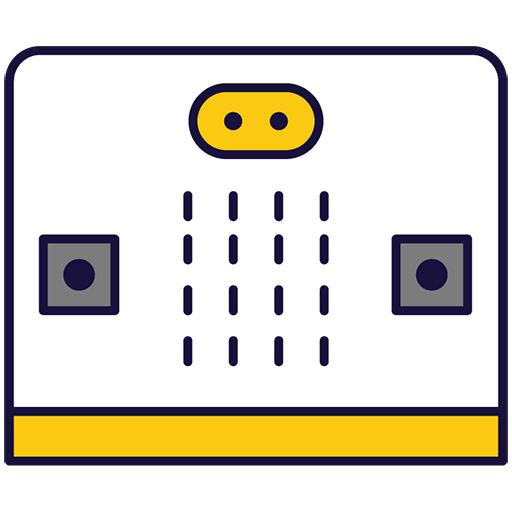
Advanced Microbit Applications
Creating Sophisticated Solutions with Microbits
Student Devices
To do this module, students will need to use either of these devices:
 Chromebooks, laptops, and PCs are crucial tools for coding and digital skills education. Chromebooks are ideal for web-based applications and collaborative projects, while laptops and PCs support a wider range of programming environments and software for more intensive tasks like software development and data analysis.
Chromebooks, laptops, and PCs are crucial tools for coding and digital skills education. Chromebooks are ideal for web-based applications and collaborative projects, while laptops and PCs support a wider range of programming environments and software for more intensive tasks like software development and data analysis.Equipped with full keyboards and the ability to run specialized coding software, these devices enable students to learn programming languages, debug code, and understand software architecture. Their versatility supports both individual learning and group projects, making them indispensable for developing critical digital and computational thinking skills in the classroom.
If necessary, students can work in groups (ideally in a group of 2 or 3 students) and use one device between them.
Lesson Equipment
Students will need to use the following equipment and can share if necessary.

The BBC microbit is a pocket-sized codeable computer with motion detection, a built-in compass and Bluetooth technology.
The board measures 4 cm × 5 cm and has a processor, accelerometer and magnetometer sensors, Bluetooth and USB connectivity, a display consisting of 25 LEDs, two programmable buttons, and can be powered by either USB or an external battery pack.
The list of things you can program the Microbit to do is nearly endless. You can program the buttons, LEDs and different sensors to create games and turn the Microbit into things like a pedometer, a compass or even a musical instrument.
Coding Ireland can provide full classroom kits, please provide student numbers to get a quote.
Module 3
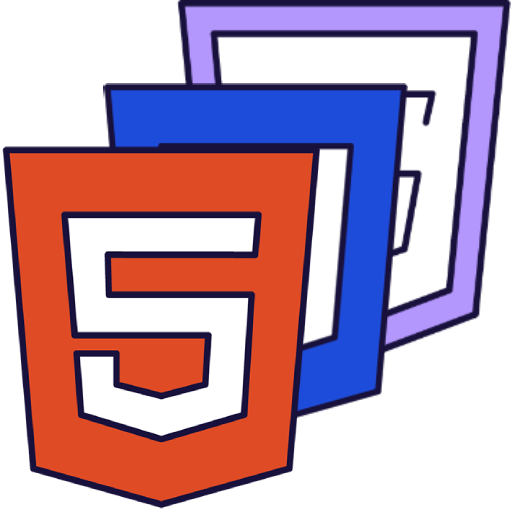
Dynamic Web Design with HTML, CSS & JS
Designing Dynamic Websites
Student Devices
To do this module, students will need to use either of these devices:
 Chromebooks, laptops, and PCs are crucial tools for coding and digital skills education. Chromebooks are ideal for web-based applications and collaborative projects, while laptops and PCs support a wider range of programming environments and software for more intensive tasks like software development and data analysis.
Chromebooks, laptops, and PCs are crucial tools for coding and digital skills education. Chromebooks are ideal for web-based applications and collaborative projects, while laptops and PCs support a wider range of programming environments and software for more intensive tasks like software development and data analysis.Equipped with full keyboards and the ability to run specialized coding software, these devices enable students to learn programming languages, debug code, and understand software architecture. Their versatility supports both individual learning and group projects, making them indispensable for developing critical digital and computational thinking skills in the classroom.

iPads and tablets are versatile, portable computing devices that offer a wide range of educational applications in the classroom. Featuring touch-sensitive screens ranging from 7 to 13 inches, these devices allow students and teachers to interact directly with content through touch, swipe, and voice commands.
If necessary, students can work in groups (ideally in a group of 2 or 3 students) and use one device between them.
Module 8
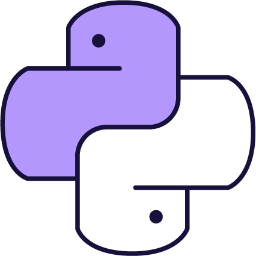
Introduction to Python
Starting with Python Programming
Student Devices
To do this module, students will need to use either of these devices:
 Chromebooks, laptops, and PCs are crucial tools for coding and digital skills education. Chromebooks are ideal for web-based applications and collaborative projects, while laptops and PCs support a wider range of programming environments and software for more intensive tasks like software development and data analysis.
Chromebooks, laptops, and PCs are crucial tools for coding and digital skills education. Chromebooks are ideal for web-based applications and collaborative projects, while laptops and PCs support a wider range of programming environments and software for more intensive tasks like software development and data analysis.Equipped with full keyboards and the ability to run specialized coding software, these devices enable students to learn programming languages, debug code, and understand software architecture. Their versatility supports both individual learning and group projects, making them indispensable for developing critical digital and computational thinking skills in the classroom.
If necessary, students can work in groups (ideally in a group of 2 or 3 students) and use one device between them.
Lesson Equipment
Students will need to use the following equipment and can share if necessary.

The BBC microbit is a pocket-sized codeable computer with motion detection, a built-in compass and Bluetooth technology.
The board measures 4 cm × 5 cm and has a processor, accelerometer and magnetometer sensors, Bluetooth and USB connectivity, a display consisting of 25 LEDs, two programmable buttons, and can be powered by either USB or an external battery pack.
The list of things you can program the Microbit to do is nearly endless. You can program the buttons, LEDs and different sensors to create games and turn the Microbit into things like a pedometer, a compass or even a musical instrument.
Coding Ireland can provide full classroom kits, please provide student numbers to get a quote.
Transition Year
Module 2

Exploring Microbit Programming
Programming micro-computers
Student Devices
To do this module, students will need to use either of these devices:
 Chromebooks, laptops, and PCs are crucial tools for coding and digital skills education. Chromebooks are ideal for web-based applications and collaborative projects, while laptops and PCs support a wider range of programming environments and software for more intensive tasks like software development and data analysis.
Chromebooks, laptops, and PCs are crucial tools for coding and digital skills education. Chromebooks are ideal for web-based applications and collaborative projects, while laptops and PCs support a wider range of programming environments and software for more intensive tasks like software development and data analysis.Equipped with full keyboards and the ability to run specialized coding software, these devices enable students to learn programming languages, debug code, and understand software architecture. Their versatility supports both individual learning and group projects, making them indispensable for developing critical digital and computational thinking skills in the classroom.
If necessary, students can work in groups (ideally in a group of 2 or 3 students) and use one device between them.
Lesson Equipment
Students will need to use the following equipment and can share if necessary.

The BBC microbit is a pocket-sized codeable computer with motion detection, a built-in compass and Bluetooth technology.
The board measures 4 cm × 5 cm and has a processor, accelerometer and magnetometer sensors, Bluetooth and USB connectivity, a display consisting of 25 LEDs, two programmable buttons, and can be powered by either USB or an external battery pack.
The list of things you can program the Microbit to do is nearly endless. You can program the buttons, LEDs and different sensors to create games and turn the Microbit into things like a pedometer, a compass or even a musical instrument.
Coding Ireland can provide full classroom kits, please provide student numbers to get a quote.
Module 4

Game Design Essentials
Game Development
Student Devices
To do this module, students will need to use either of these devices:
 Chromebooks, laptops, and PCs are crucial tools for coding and digital skills education. Chromebooks are ideal for web-based applications and collaborative projects, while laptops and PCs support a wider range of programming environments and software for more intensive tasks like software development and data analysis.
Chromebooks, laptops, and PCs are crucial tools for coding and digital skills education. Chromebooks are ideal for web-based applications and collaborative projects, while laptops and PCs support a wider range of programming environments and software for more intensive tasks like software development and data analysis.Equipped with full keyboards and the ability to run specialized coding software, these devices enable students to learn programming languages, debug code, and understand software architecture. Their versatility supports both individual learning and group projects, making them indispensable for developing critical digital and computational thinking skills in the classroom.

iPads and tablets are versatile, portable computing devices that offer a wide range of educational applications in the classroom. Featuring touch-sensitive screens ranging from 7 to 13 inches, these devices allow students and teachers to interact directly with content through touch, swipe, and voice commands.
If necessary, students can work in groups (ideally in a group of 2 or 3 students) and use one device between them.
Module 5

Exploring Digital Art and Design
Digital Creativity
Student Devices
To do this module, students will need to use either of these devices:
 Chromebooks, laptops, and PCs are crucial tools for coding and digital skills education. Chromebooks are ideal for web-based applications and collaborative projects, while laptops and PCs support a wider range of programming environments and software for more intensive tasks like software development and data analysis.
Chromebooks, laptops, and PCs are crucial tools for coding and digital skills education. Chromebooks are ideal for web-based applications and collaborative projects, while laptops and PCs support a wider range of programming environments and software for more intensive tasks like software development and data analysis.Equipped with full keyboards and the ability to run specialized coding software, these devices enable students to learn programming languages, debug code, and understand software architecture. Their versatility supports both individual learning and group projects, making them indispensable for developing critical digital and computational thinking skills in the classroom.

iPads and tablets are versatile, portable computing devices that offer a wide range of educational applications in the classroom. Featuring touch-sensitive screens ranging from 7 to 13 inches, these devices allow students and teachers to interact directly with content through touch, swipe, and voice commands.
If necessary, students can work in groups (ideally in a group of 2 or 3 students) and use one device between them.
Module 1
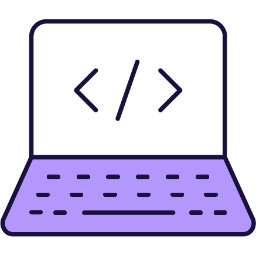
Introduction to Coding Concepts
Foundations in Coding
Student Devices
To do this module, students will need to use either of these devices:
 Chromebooks, laptops, and PCs are crucial tools for coding and digital skills education. Chromebooks are ideal for web-based applications and collaborative projects, while laptops and PCs support a wider range of programming environments and software for more intensive tasks like software development and data analysis.
Chromebooks, laptops, and PCs are crucial tools for coding and digital skills education. Chromebooks are ideal for web-based applications and collaborative projects, while laptops and PCs support a wider range of programming environments and software for more intensive tasks like software development and data analysis.Equipped with full keyboards and the ability to run specialized coding software, these devices enable students to learn programming languages, debug code, and understand software architecture. Their versatility supports both individual learning and group projects, making them indispensable for developing critical digital and computational thinking skills in the classroom.

iPads and tablets are versatile, portable computing devices that offer a wide range of educational applications in the classroom. Featuring touch-sensitive screens ranging from 7 to 13 inches, these devices allow students and teachers to interact directly with content through touch, swipe, and voice commands.
If necessary, students can work in groups (ideally in a group of 2 or 3 students) and use one device between them.
Module 4

Robotic Cars and Automation
Robotics, Automation and Engineering
Student Devices
To do this module, students will need to use either of these devices:
 Chromebooks, laptops, and PCs are crucial tools for coding and digital skills education. Chromebooks are ideal for web-based applications and collaborative projects, while laptops and PCs support a wider range of programming environments and software for more intensive tasks like software development and data analysis.
Chromebooks, laptops, and PCs are crucial tools for coding and digital skills education. Chromebooks are ideal for web-based applications and collaborative projects, while laptops and PCs support a wider range of programming environments and software for more intensive tasks like software development and data analysis.Equipped with full keyboards and the ability to run specialized coding software, these devices enable students to learn programming languages, debug code, and understand software architecture. Their versatility supports both individual learning and group projects, making them indispensable for developing critical digital and computational thinking skills in the classroom.
If necessary, students can work in groups (ideally in a group of 2 or 3 students) and use one device between them.
Lesson Equipment
Students will need to use the following equipment and can share if necessary.

The BBC microbit is a pocket-sized codeable computer with motion detection, a built-in compass and Bluetooth technology.
The board measures 4 cm × 5 cm and has a processor, accelerometer and magnetometer sensors, Bluetooth and USB connectivity, a display consisting of 25 LEDs, two programmable buttons, and can be powered by either USB or an external battery pack.
The list of things you can program the Microbit to do is nearly endless. You can program the buttons, LEDs and different sensors to create games and turn the Microbit into things like a pedometer, a compass or even a musical instrument.

The Move Motor Car is a versatile, programmable vehicle that is powered and controlled by the micro:bit, a pocket-sized computer.
This car has motorized wheels and a variety of sensors, allowing students to create and test different robotics and coding projects. By connecting a micro:bit to the car, students can use the MakeCode platform to program the vehicle's movements, speed, and responses to sensor inputs. This provides an engaging and hands-on way for students to learn about coding, robotics, and engineering concepts.
Whether it's navigating through a maze, following a line on the ground, or responding to obstacles, the Move Motor Sensor Car offers endless opportunities for creativity and problem-solving. Perfect for classroom activities, it allows students to explore STEM concepts in an interactive and enjoyable way.

The Move Motor Klaw is a robotic accessory designed to be attached to motorized vehicles, like the Move Motor Robot Car.
This mechanical claw can be programmed to open and close, allowing it to pick up, hold, or move objects. By integrating it with a micro:bit and using the MakeCode platform, students can code the Klaw to perform specific actions, such as grabbing items or completing simple tasks. Ideal for classroom projects, the Move Motor Klaw offers students a hands-on way to explore robotics, engineering, and coding, enhancing their problem-solving and creative skills.

A Phillips screwdriver is a hand tool with a cross-shaped tip, designed to drive screws with a matching recessed cross or "Phillips" head. It's commonly used in a wide range of applications, including assembly and repair of appliances, electronics, and furniture. Essential for many classroom projects, it helps students learn practical skills and safely connect components.

The STOP:bit for the BBC micro:bit is the ultimate upgrade for traffic light/pedestrian crossing projects. It is a bolt-on/clip-on board for the BBC micro:bit replicating a traffic light.
Coding Ireland can provide full classroom kits, please provide student numbers to get a quote.
Module 6
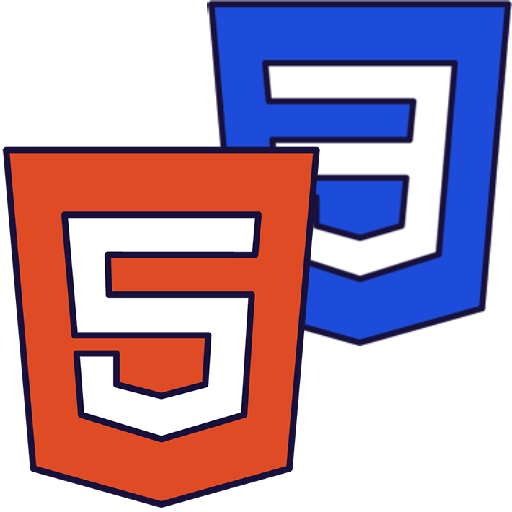
Web Design Basics
Learn HTML and CSS
Student Devices
To do this module, students will need to use either of these devices:
 Chromebooks, laptops, and PCs are crucial tools for coding and digital skills education. Chromebooks are ideal for web-based applications and collaborative projects, while laptops and PCs support a wider range of programming environments and software for more intensive tasks like software development and data analysis.
Chromebooks, laptops, and PCs are crucial tools for coding and digital skills education. Chromebooks are ideal for web-based applications and collaborative projects, while laptops and PCs support a wider range of programming environments and software for more intensive tasks like software development and data analysis.Equipped with full keyboards and the ability to run specialized coding software, these devices enable students to learn programming languages, debug code, and understand software architecture. Their versatility supports both individual learning and group projects, making them indispensable for developing critical digital and computational thinking skills in the classroom.

iPads and tablets are versatile, portable computing devices that offer a wide range of educational applications in the classroom. Featuring touch-sensitive screens ranging from 7 to 13 inches, these devices allow students and teachers to interact directly with content through touch, swipe, and voice commands.
If necessary, students can work in groups (ideally in a group of 2 or 3 students) and use one device between them.
Module 7
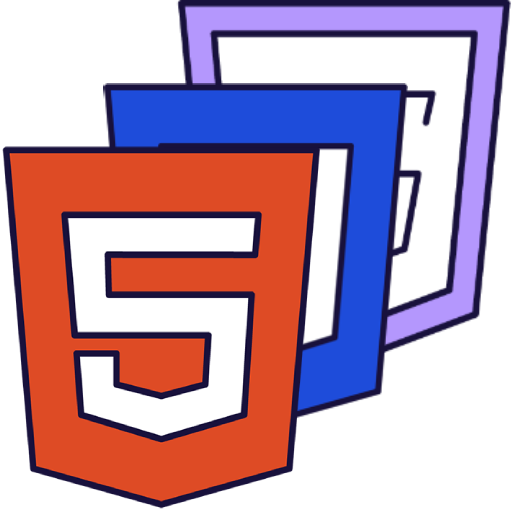
Dynamic Web Design
Coding with HTML, CSS and JavaScript
Student Devices
To do this module, students will need to use either of these devices:
 Chromebooks, laptops, and PCs are crucial tools for coding and digital skills education. Chromebooks are ideal for web-based applications and collaborative projects, while laptops and PCs support a wider range of programming environments and software for more intensive tasks like software development and data analysis.
Chromebooks, laptops, and PCs are crucial tools for coding and digital skills education. Chromebooks are ideal for web-based applications and collaborative projects, while laptops and PCs support a wider range of programming environments and software for more intensive tasks like software development and data analysis.Equipped with full keyboards and the ability to run specialized coding software, these devices enable students to learn programming languages, debug code, and understand software architecture. Their versatility supports both individual learning and group projects, making them indispensable for developing critical digital and computational thinking skills in the classroom.

iPads and tablets are versatile, portable computing devices that offer a wide range of educational applications in the classroom. Featuring touch-sensitive screens ranging from 7 to 13 inches, these devices allow students and teachers to interact directly with content through touch, swipe, and voice commands.
If necessary, students can work in groups (ideally in a group of 2 or 3 students) and use one device between them.
Module 8

Introduction to Python
Starting with Python Programming
Student Devices
To do this module, students will need to use either of these devices:
 Chromebooks, laptops, and PCs are crucial tools for coding and digital skills education. Chromebooks are ideal for web-based applications and collaborative projects, while laptops and PCs support a wider range of programming environments and software for more intensive tasks like software development and data analysis.
Chromebooks, laptops, and PCs are crucial tools for coding and digital skills education. Chromebooks are ideal for web-based applications and collaborative projects, while laptops and PCs support a wider range of programming environments and software for more intensive tasks like software development and data analysis.Equipped with full keyboards and the ability to run specialized coding software, these devices enable students to learn programming languages, debug code, and understand software architecture. Their versatility supports both individual learning and group projects, making them indispensable for developing critical digital and computational thinking skills in the classroom.
If necessary, students can work in groups (ideally in a group of 2 or 3 students) and use one device between them.
Lesson Equipment
Students will need to use the following equipment and can share if necessary.

The BBC microbit is a pocket-sized codeable computer with motion detection, a built-in compass and Bluetooth technology.
The board measures 4 cm × 5 cm and has a processor, accelerometer and magnetometer sensors, Bluetooth and USB connectivity, a display consisting of 25 LEDs, two programmable buttons, and can be powered by either USB or an external battery pack.
The list of things you can program the Microbit to do is nearly endless. You can program the buttons, LEDs and different sensors to create games and turn the Microbit into things like a pedometer, a compass or even a musical instrument.
Coding Ireland can provide full classroom kits, please provide student numbers to get a quote.
5th Year
Module 1
.png)
Introduction to Computer Science & Problem-Solving
Gain an overview of Computer Science, learn to break down problems logically, and write your first simple programs.
Student Devices
To do this module, students will need to use either of these devices:
 Chromebooks, laptops, and PCs are crucial tools for coding and digital skills education. Chromebooks are ideal for web-based applications and collaborative projects, while laptops and PCs support a wider range of programming environments and software for more intensive tasks like software development and data analysis.
Chromebooks, laptops, and PCs are crucial tools for coding and digital skills education. Chromebooks are ideal for web-based applications and collaborative projects, while laptops and PCs support a wider range of programming environments and software for more intensive tasks like software development and data analysis.Equipped with full keyboards and the ability to run specialized coding software, these devices enable students to learn programming languages, debug code, and understand software architecture. Their versatility supports both individual learning and group projects, making them indispensable for developing critical digital and computational thinking skills in the classroom.
If necessary, students can work in groups (ideally in a group of 2 or 3 students) and use one device between them.
Module 2
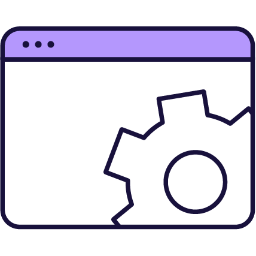
Data Representation & Data Management
Learn how computers store numbers and text, handle lists/arrays, and see how large datasets power simple AI.
Student Devices
To do this module, students will need to use either of these devices:
 Chromebooks, laptops, and PCs are crucial tools for coding and digital skills education. Chromebooks are ideal for web-based applications and collaborative projects, while laptops and PCs support a wider range of programming environments and software for more intensive tasks like software development and data analysis.
Chromebooks, laptops, and PCs are crucial tools for coding and digital skills education. Chromebooks are ideal for web-based applications and collaborative projects, while laptops and PCs support a wider range of programming environments and software for more intensive tasks like software development and data analysis.Equipped with full keyboards and the ability to run specialized coding software, these devices enable students to learn programming languages, debug code, and understand software architecture. Their versatility supports both individual learning and group projects, making them indispensable for developing critical digital and computational thinking skills in the classroom.
If necessary, students can work in groups (ideally in a group of 2 or 3 students) and use one device between them.
Module 3

Computer Systems & Networks
Understand how computers and networks function at a system level, plus the basics of staying secure online.
Student Devices
To do this module, students will need to use either of these devices:
 Chromebooks, laptops, and PCs are crucial tools for coding and digital skills education. Chromebooks are ideal for web-based applications and collaborative projects, while laptops and PCs support a wider range of programming environments and software for more intensive tasks like software development and data analysis.
Chromebooks, laptops, and PCs are crucial tools for coding and digital skills education. Chromebooks are ideal for web-based applications and collaborative projects, while laptops and PCs support a wider range of programming environments and software for more intensive tasks like software development and data analysis.Equipped with full keyboards and the ability to run specialized coding software, these devices enable students to learn programming languages, debug code, and understand software architecture. Their versatility supports both individual learning and group projects, making them indispensable for developing critical digital and computational thinking skills in the classroom.
If necessary, students can work in groups (ideally in a group of 2 or 3 students) and use one device between them.
Module 4

Programming Fundamentals (Part 1)
Create interactive programs, structure code with functions, learn to debug effectively.
Student Devices
To do this module, students will need to use either of these devices:
 Chromebooks, laptops, and PCs are crucial tools for coding and digital skills education. Chromebooks are ideal for web-based applications and collaborative projects, while laptops and PCs support a wider range of programming environments and software for more intensive tasks like software development and data analysis.
Chromebooks, laptops, and PCs are crucial tools for coding and digital skills education. Chromebooks are ideal for web-based applications and collaborative projects, while laptops and PCs support a wider range of programming environments and software for more intensive tasks like software development and data analysis.Equipped with full keyboards and the ability to run specialized coding software, these devices enable students to learn programming languages, debug code, and understand software architecture. Their versatility supports both individual learning and group projects, making them indispensable for developing critical digital and computational thinking skills in the classroom.
If necessary, students can work in groups (ideally in a group of 2 or 3 students) and use one device between them.
Module 5

Web Technologies
Build and style websites, add interactive features, and understand how to design responsibly.
Student Devices
To do this module, students will need to use either of these devices:
 Chromebooks, laptops, and PCs are crucial tools for coding and digital skills education. Chromebooks are ideal for web-based applications and collaborative projects, while laptops and PCs support a wider range of programming environments and software for more intensive tasks like software development and data analysis.
Chromebooks, laptops, and PCs are crucial tools for coding and digital skills education. Chromebooks are ideal for web-based applications and collaborative projects, while laptops and PCs support a wider range of programming environments and software for more intensive tasks like software development and data analysis.Equipped with full keyboards and the ability to run specialized coding software, these devices enable students to learn programming languages, debug code, and understand software architecture. Their versatility supports both individual learning and group projects, making them indispensable for developing critical digital and computational thinking skills in the classroom.
If necessary, students can work in groups (ideally in a group of 2 or 3 students) and use one device between them.
6th Year
Module 1

Advanced Programming & Data Structures (Part 2)
Deepen your coding with OOP, see how algorithms are optimized (Big O), and build a simple AI model
Student Devices
To do this module, students will need to use either of these devices:
 Chromebooks, laptops, and PCs are crucial tools for coding and digital skills education. Chromebooks are ideal for web-based applications and collaborative projects, while laptops and PCs support a wider range of programming environments and software for more intensive tasks like software development and data analysis.
Chromebooks, laptops, and PCs are crucial tools for coding and digital skills education. Chromebooks are ideal for web-based applications and collaborative projects, while laptops and PCs support a wider range of programming environments and software for more intensive tasks like software development and data analysis.Equipped with full keyboards and the ability to run specialized coding software, these devices enable students to learn programming languages, debug code, and understand software architecture. Their versatility supports both individual learning and group projects, making them indispensable for developing critical digital and computational thinking skills in the classroom.
If necessary, students can work in groups (ideally in a group of 2 or 3 students) and use one device between them.
Module 2

Software Development & Project Management
Learn how real software is planned and managed. Work in teams to prototype, track tasks, handle merges in Git, and understand licensing.
Student Devices
To do this module, students will need to use either of these devices:
 Chromebooks, laptops, and PCs are crucial tools for coding and digital skills education. Chromebooks are ideal for web-based applications and collaborative projects, while laptops and PCs support a wider range of programming environments and software for more intensive tasks like software development and data analysis.
Chromebooks, laptops, and PCs are crucial tools for coding and digital skills education. Chromebooks are ideal for web-based applications and collaborative projects, while laptops and PCs support a wider range of programming environments and software for more intensive tasks like software development and data analysis.Equipped with full keyboards and the ability to run specialized coding software, these devices enable students to learn programming languages, debug code, and understand software architecture. Their versatility supports both individual learning and group projects, making them indispensable for developing critical digital and computational thinking skills in the classroom.
If necessary, students can work in groups (ideally in a group of 2 or 3 students) and use one device between them.
Module 3

Coursework / Project Implementation (Part 1)
Develop your project idea, set clear goals, and start coding.
Student Devices
To do this module, students will need to use either of these devices:
 Chromebooks, laptops, and PCs are crucial tools for coding and digital skills education. Chromebooks are ideal for web-based applications and collaborative projects, while laptops and PCs support a wider range of programming environments and software for more intensive tasks like software development and data analysis.
Chromebooks, laptops, and PCs are crucial tools for coding and digital skills education. Chromebooks are ideal for web-based applications and collaborative projects, while laptops and PCs support a wider range of programming environments and software for more intensive tasks like software development and data analysis.Equipped with full keyboards and the ability to run specialized coding software, these devices enable students to learn programming languages, debug code, and understand software architecture. Their versatility supports both individual learning and group projects, making them indispensable for developing critical digital and computational thinking skills in the classroom.
If necessary, students can work in groups (ideally in a group of 2 or 3 students) and use one device between them.
Module 4

Coursework / Project Implementation (Part 2) & Documentation
Finalise your project, ensure it’s fully tested and documented, and submit it officially.
Student Devices
To do this module, students will need to use either of these devices:
 Chromebooks, laptops, and PCs are crucial tools for coding and digital skills education. Chromebooks are ideal for web-based applications and collaborative projects, while laptops and PCs support a wider range of programming environments and software for more intensive tasks like software development and data analysis.
Chromebooks, laptops, and PCs are crucial tools for coding and digital skills education. Chromebooks are ideal for web-based applications and collaborative projects, while laptops and PCs support a wider range of programming environments and software for more intensive tasks like software development and data analysis.Equipped with full keyboards and the ability to run specialized coding software, these devices enable students to learn programming languages, debug code, and understand software architecture. Their versatility supports both individual learning and group projects, making them indispensable for developing critical digital and computational thinking skills in the classroom.
If necessary, students can work in groups (ideally in a group of 2 or 3 students) and use one device between them.
Module 5

Revision & Exam Preparation
Revisit everything—data, programming, systems, ethics—and practice with past exam papers, mock tests, and final exam techniques.
Student Devices
To do this module, students will need to use either of these devices:
 Chromebooks, laptops, and PCs are crucial tools for coding and digital skills education. Chromebooks are ideal for web-based applications and collaborative projects, while laptops and PCs support a wider range of programming environments and software for more intensive tasks like software development and data analysis.
Chromebooks, laptops, and PCs are crucial tools for coding and digital skills education. Chromebooks are ideal for web-based applications and collaborative projects, while laptops and PCs support a wider range of programming environments and software for more intensive tasks like software development and data analysis.Equipped with full keyboards and the ability to run specialized coding software, these devices enable students to learn programming languages, debug code, and understand software architecture. Their versatility supports both individual learning and group projects, making them indispensable for developing critical digital and computational thinking skills in the classroom.
If necessary, students can work in groups (ideally in a group of 2 or 3 students) and use one device between them.
 Introduction to Scratch Programming
Introduction to Scratch Programming
Get Started
Course Description
2 week course @ 1 hour per week
This module introduces students to the basics of coding and Scratch programming. The first week covers what coding is, how to navigate Scratch, and setting up a Scratch account. Teachers should ensure students understand the basics, facilitate exploration, and manage account creation. The second week delves into creating a Paddle Ball game, teaching students about moving sprites, backdrops, and using sensing blocks.
- Understand the concept of coding and its applications.
- Navigate the Scratch website and manipulate sprites and blocks.
- Create and manage a personal Scratch account.
- Develop a basic game using Scratch, incorporating movement and sensing blocks.
- Apply knowledge of loops, values, and backdrops in Scratch projects.
To do this module, students will need to use one of these devices. If necessary, students can work in groups (ideally in a group of 2 or 3 students) and use one device between them.
 Chromebooks, laptops, and PCs are crucial tools for coding and digital skills education. Chromebooks are ideal for web-based applications and collaborative projects, while laptops and PCs support a wider range of programming environments and software for more intensive tasks like software development and data analysis.
Chromebooks, laptops, and PCs are crucial tools for coding and digital skills education. Chromebooks are ideal for web-based applications and collaborative projects, while laptops and PCs support a wider range of programming environments and software for more intensive tasks like software development and data analysis.Equipped with full keyboards and the ability to run specialized coding software, these devices enable students to learn programming languages, debug code, and understand software architecture. Their versatility supports both individual learning and group projects, making them indispensable for developing critical digital and computational thinking skills in the classroom.

iPads and tablets are versatile, portable computing devices that offer a wide range of educational applications in the classroom. Featuring touch-sensitive screens ranging from 7 to 13 inches, these devices allow students and teachers to interact directly with content through touch, swipe, and voice commands.
 Coding Projects with Scratch
Coding Projects with Scratch
Get Started
Course Description
8 week course @ 1 hour per week
This module guides students through creating various projects using Scratch, from language translators to interactive games. Teachers should familiarise themselves with Scratch's interface and extensions, and be prepared to explain concepts such as variables, sprite manipulation, and game loops. Encourage creativity and experimentation, and ensure students understand the importance of practice in mastering coding. The module concludes with a build battle, challenging students to apply their newly acquired skills.
- Develop a language translator using Scratch, incorporating the Translate and Text to Speech extensions, variables, and interactive elements.
- Create an engaging 'Shark Swim' game using Scratch, mastering sprite control, animation, collision detection, and game loop establishment.
- Program an autonomous car using Scratch, understanding the workings of autonomous cars, sprite manipulation, track design, and autonomous navigation.
- Code a pattern creator using Scratch, utilising the pen tool, variables, and pen colour and size manipulation to create complex patterns.
- Develop an interactive 'Attack of the Dots' game using Scratch, controlling a coloured disc, cloning attacking dots, and detecting dot colours.
- Create a 'Rocket Lander' game using Scratch, programming gravity, rocket movement, animations for thrust and explosion, and a fuel limit.
- Design a platformer game using Scratch, creating characters and platforms, and writing code for character movements, gravity application, and effects like jumping and trailing.
- Engage in build battles, demonstrating problem-solving skills and creativity in tackling code challenges using Scratch.
To do this module, students will need to use one of these devices. If necessary, students can work in groups (ideally in a group of 2 or 3 students) and use one device between them.
 Chromebooks, laptops, and PCs are crucial tools for coding and digital skills education. Chromebooks are ideal for web-based applications and collaborative projects, while laptops and PCs support a wider range of programming environments and software for more intensive tasks like software development and data analysis.
Chromebooks, laptops, and PCs are crucial tools for coding and digital skills education. Chromebooks are ideal for web-based applications and collaborative projects, while laptops and PCs support a wider range of programming environments and software for more intensive tasks like software development and data analysis.Equipped with full keyboards and the ability to run specialized coding software, these devices enable students to learn programming languages, debug code, and understand software architecture. Their versatility supports both individual learning and group projects, making them indispensable for developing critical digital and computational thinking skills in the classroom.

iPads and tablets are versatile, portable computing devices that offer a wide range of educational applications in the classroom. Featuring touch-sensitive screens ranging from 7 to 13 inches, these devices allow students and teachers to interact directly with content through touch, swipe, and voice commands.
Week 1
Week 2
Week 3
Week 4
Week 5
Week 6
Week 7
Week 8
 Game Development
Game Development
Get Started
Course Description
8 week course @ 1 hour per week
This module guides students through creating various games using MakeCode Arcade. Each lesson is hands-on and interactive, allowing students to learn by doing. Teachers should ensure students understand the concepts of sprites, coordinates, and coding effects. Encourage creativity and problem-solving as they modify the game or create a new one. Ensure students understand the importance of correct code placement and sprite selection. Encourage them to test their game frequently to ensure it functions as expected. The module concludes with a group project, fostering creativity and teamwork.
- Create and control game sprites using MakeCode Arcade.
- Design and implement game mechanics such as scoring systems, timers, and game over conditions.
- Program sprite interactions including overlaps, movements, and projectile firing.
- Develop a platform game with elements such as gravity, jumping, and danger tiles.
- Design and execute a group project, demonstrating creativity and teamwork.
To do this module, students will need to use one of these devices. If necessary, students can work in groups (ideally in a group of 2 or 3 students) and use one device between them.
 Chromebooks, laptops, and PCs are crucial tools for coding and digital skills education. Chromebooks are ideal for web-based applications and collaborative projects, while laptops and PCs support a wider range of programming environments and software for more intensive tasks like software development and data analysis.
Chromebooks, laptops, and PCs are crucial tools for coding and digital skills education. Chromebooks are ideal for web-based applications and collaborative projects, while laptops and PCs support a wider range of programming environments and software for more intensive tasks like software development and data analysis.Equipped with full keyboards and the ability to run specialized coding software, these devices enable students to learn programming languages, debug code, and understand software architecture. Their versatility supports both individual learning and group projects, making them indispensable for developing critical digital and computational thinking skills in the classroom.

iPads and tablets are versatile, portable computing devices that offer a wide range of educational applications in the classroom. Featuring touch-sensitive screens ranging from 7 to 13 inches, these devices allow students and teachers to interact directly with content through touch, swipe, and voice commands.
Week 1
Week 2
Week 3
Week 4
Week 5
Week 6
Week 7
Week 8
 Coding Projects with Microbits
Coding Projects with Microbits
Get Started
Course Description
8 week course @ 1 hour per week
This module introduces students to the fascinating world of microbits, pocket-sized computers that can be programmed for various projects. Teachers should guide students through creating new projects, exploring the project editor, and writing code. The module includes designing games, creating an alarm system, a microbit finder, a weather station, a compass and thermometer, a pet, and a voting system. Teachers should ensure students understand the coding concepts and encourage them to think critically about the security of their system.
- Program a microbit to display messages, react to button presses, show icons, play melodies, and respond to movement.
- Design and code a reaction timer game using a microbit, incorporating elements such as random delays and variables to record reaction times.
- Create a microbit-based alarm system, utilising sensors to detect movement and sound, and programming the system to activate when thresholds are crossed.
- Develop a 'Microbit Finder' using radio signals to detect proximity between two microbits, including setting up a radio group, creating variables, and sending/receiving messages.
- Design a microbit weather station that displays sensor readings based on button presses, including temperature, light level, sound level, and acceleration.
- Transform a microbit into a compass and thermometer, programming the buttons to use the built-in sensors.
- Program a microbit to act as a pet with varying emotions, responding to different interactions.
- Develop a microbit voting system, programming microbits to cast votes, tally the votes, and reset the voting system, with an added security feature.
To do this module, students will need to use one of these devices. If necessary, students can work in groups (ideally in a group of 2 or 3 students) and use one device between them.
 Chromebooks, laptops, and PCs are crucial tools for coding and digital skills education. Chromebooks are ideal for web-based applications and collaborative projects, while laptops and PCs support a wider range of programming environments and software for more intensive tasks like software development and data analysis.
Chromebooks, laptops, and PCs are crucial tools for coding and digital skills education. Chromebooks are ideal for web-based applications and collaborative projects, while laptops and PCs support a wider range of programming environments and software for more intensive tasks like software development and data analysis.Equipped with full keyboards and the ability to run specialized coding software, these devices enable students to learn programming languages, debug code, and understand software architecture. Their versatility supports both individual learning and group projects, making them indispensable for developing critical digital and computational thinking skills in the classroom.
The equipment listed below is used in several lessons throughout this course. Please note that these items can be shared among students if necessary.

The BBC microbit is a pocket-sized codeable computer with motion detection, a built-in compass and Bluetooth technology.
The board measures 4 cm × 5 cm and has a processor, accelerometer and magnetometer sensors, Bluetooth and USB connectivity, a display consisting of 25 LEDs, two programmable buttons, and can be powered by either USB or an external battery pack.
The list of things you can program the Microbit to do is nearly endless. You can program the buttons, LEDs and different sensors to create games and turn the Microbit into things like a pedometer, a compass or even a musical instrument.
Where to buy
Microbits can be purchased from a number of online retailers and can be purchased with and without a USB cable and battery pack. They can also be purchased in bulk from some retailers.
Online retailers
Week 1
Week 2
Week 3
Week 4
Week 5
Week 6
Week 7
Week 8
 Discovering Artificial Intelligence
Discovering Artificial Intelligence
Get Started
Course Description
8 week course @ 1 hour per week
This module explores the fascinating world of artificial intelligence (AI), starting with an introduction to AI models, their types, applications, and limitations. Students will gain hands-on experience creating image and pose models using Google's Teachable Machine, and applying these models in interactive games using Scratch. The module culminates in a project where students conceptualise, plan, and build their own AI Scratch project, applying their newfound knowledge and skills. Teachers should familiarise themselves with the tools and concepts, and be prepared to guide students through each step, encouraging creativity and problem-solving throughout.
- Understand and explain the function, types, applications, and limitations of AI models, including ethical considerations.
- Create an image model using Google's Teachable Machine for a rock, paper, scissors game.
- Develop a Rock, Paper, Scissors game using Scratch and Google Teachable Machine, incorporating variables, randomisation, and conditionals.
- Create a pose model using Google's Teachable Machine for a space game, understanding the importance of testing and adjusting the model.
- Conceptualise, plan, and build a unique AI Scratch project, demonstrating creativity, problem-solving, and the ability to seek and incorporate feedback.
To do this module, students will need to use one of these devices. If necessary, students can work in groups (ideally in a group of 2 or 3 students) and use one device between them.
 Chromebooks, laptops, and PCs are crucial tools for coding and digital skills education. Chromebooks are ideal for web-based applications and collaborative projects, while laptops and PCs support a wider range of programming environments and software for more intensive tasks like software development and data analysis.
Chromebooks, laptops, and PCs are crucial tools for coding and digital skills education. Chromebooks are ideal for web-based applications and collaborative projects, while laptops and PCs support a wider range of programming environments and software for more intensive tasks like software development and data analysis.Equipped with full keyboards and the ability to run specialized coding software, these devices enable students to learn programming languages, debug code, and understand software architecture. Their versatility supports both individual learning and group projects, making them indispensable for developing critical digital and computational thinking skills in the classroom.

iPads and tablets are versatile, portable computing devices that offer a wide range of educational applications in the classroom. Featuring touch-sensitive screens ranging from 7 to 13 inches, these devices allow students and teachers to interact directly with content through touch, swipe, and voice commands.
The equipment listed below is used in several lessons throughout this course. Please note that these items can be shared among students if necessary.
Week 2
Week 4
 Introduction to Microbit Programming
Introduction to Microbit Programming
Get Started
Course Description
2 week course @ 1 hour per week
This module introduces students to the fascinating world of microbit programming. Teachers should guide students through creating new projects, exploring the project editor, and writing and deleting code. The first lesson focuses on programming microbits to display messages, react to button presses, show icons, and play melodies. The second lesson involves creating a reaction timer game, teaching students how to create variables, add random delays, and record reaction times. Teachers should encourage experimentation and exploration throughout.
- Understand and utilise the project editor on the MakeCode for Microbit website.
- Create, add, and delete code to program a Microbit to display messages, react to button presses, and play melodies.
- Connect a Microbit to a computer and upload the programmed code.
- Design and create a reaction timer game using a Microbit, incorporating random visual prompts.
- Use variables to store time stamps and record a player's reaction time in the game.
To do this module, students will need to use one of these devices. If necessary, students can work in groups (ideally in a group of 2 or 3 students) and use one device between them.
 Chromebooks, laptops, and PCs are crucial tools for coding and digital skills education. Chromebooks are ideal for web-based applications and collaborative projects, while laptops and PCs support a wider range of programming environments and software for more intensive tasks like software development and data analysis.
Chromebooks, laptops, and PCs are crucial tools for coding and digital skills education. Chromebooks are ideal for web-based applications and collaborative projects, while laptops and PCs support a wider range of programming environments and software for more intensive tasks like software development and data analysis.Equipped with full keyboards and the ability to run specialized coding software, these devices enable students to learn programming languages, debug code, and understand software architecture. Their versatility supports both individual learning and group projects, making them indispensable for developing critical digital and computational thinking skills in the classroom.
The equipment listed below is used in several lessons throughout this course. Please note that these items can be shared among students if necessary.

The BBC microbit is a pocket-sized codeable computer with motion detection, a built-in compass and Bluetooth technology.
The board measures 4 cm × 5 cm and has a processor, accelerometer and magnetometer sensors, Bluetooth and USB connectivity, a display consisting of 25 LEDs, two programmable buttons, and can be powered by either USB or an external battery pack.
The list of things you can program the Microbit to do is nearly endless. You can program the buttons, LEDs and different sensors to create games and turn the Microbit into things like a pedometer, a compass or even a musical instrument.
Where to buy
Microbits can be purchased from a number of online retailers and can be purchased with and without a USB cable and battery pack. They can also be purchased in bulk from some retailers.
Online retailers
 Game Design Essentials
Game Design Essentials
Get Started
Course Description
8 week course @ 1 hour per week
This module guides students through creating various interactive games using MakeCode Arcade. Each week focuses on a different project, teaching students to design sprites, control movements, program interactions, and set up game mechanics. Teachers should ensure students understand each step before moving on, encourage experimentation with the code, and emphasise the importance of correct variable selection and code placement. The module concludes with a game showcase, allowing students to present their creations.
- Create and control game sprites using MakeCode Arcade.
- Design and implement game mechanics such as movement, collision detection, scoring, and game over conditions.
- Understand and apply coding concepts to create interactive games, including sprite overlaps, game logic, and variable tracking.
- Develop a variety of games including arcade, platform, and battle arena games, demonstrating creativity and technical skills.
- Present a completed game project, demonstrating understanding of game design principles and coding concepts.
To do this module, students will need to use one of these devices. If necessary, students can work in groups (ideally in a group of 2 or 3 students) and use one device between them.
 Chromebooks, laptops, and PCs are crucial tools for coding and digital skills education. Chromebooks are ideal for web-based applications and collaborative projects, while laptops and PCs support a wider range of programming environments and software for more intensive tasks like software development and data analysis.
Chromebooks, laptops, and PCs are crucial tools for coding and digital skills education. Chromebooks are ideal for web-based applications and collaborative projects, while laptops and PCs support a wider range of programming environments and software for more intensive tasks like software development and data analysis.Equipped with full keyboards and the ability to run specialized coding software, these devices enable students to learn programming languages, debug code, and understand software architecture. Their versatility supports both individual learning and group projects, making them indispensable for developing critical digital and computational thinking skills in the classroom.

iPads and tablets are versatile, portable computing devices that offer a wide range of educational applications in the classroom. Featuring touch-sensitive screens ranging from 7 to 13 inches, these devices allow students and teachers to interact directly with content through touch, swipe, and voice commands.
Week 1
Week 2
Week 3
Week 4
Week 5
Week 6
Week 7
Week 8
 Applied Microbit Programming
Applied Microbit Programming
Get Started
Course Description
8 week course @ 1 hour per week
This module delves into the world of Microbit programming, providing students with hands-on experience in creating games, sensor graphs, and IoT networks. Teachers should encourage students to experiment with different functionalities of the Microbit, such as button inputs, sensors, and radio communication. Group work is encouraged in some lessons to foster collaboration. Teachers should guide students through the coding process, ensuring understanding, and facilitate discussions on project improvements to stimulate critical and creative thinking.
- Develop a simple guessing game using Microbit, incorporating variables, button inputs, and game logic.
- Investigate and understand the functionality of different sensors on the Microbit.
- Create a time-based game on Microbit, enhancing precision and timing skills.
- Utilise a Microbit to control a Scratch Paddle Ball game, demonstrating understanding of motion sensors.
- Program a multi-device IoT network using Microbits, monitoring and displaying various environmental factors.
- Enable communication between two Microbits using radio messages, demonstrating understanding of wireless communication.
- Develop a motion-based game using the accelerometer on the Microbit.
- Create a Microbit-based 'Invaders' game, applying advanced programming skills.
To do this module, students will need to use one of these devices. If necessary, students can work in groups (ideally in a group of 2 or 3 students) and use one device between them.
 Chromebooks, laptops, and PCs are crucial tools for coding and digital skills education. Chromebooks are ideal for web-based applications and collaborative projects, while laptops and PCs support a wider range of programming environments and software for more intensive tasks like software development and data analysis.
Chromebooks, laptops, and PCs are crucial tools for coding and digital skills education. Chromebooks are ideal for web-based applications and collaborative projects, while laptops and PCs support a wider range of programming environments and software for more intensive tasks like software development and data analysis.Equipped with full keyboards and the ability to run specialized coding software, these devices enable students to learn programming languages, debug code, and understand software architecture. Their versatility supports both individual learning and group projects, making them indispensable for developing critical digital and computational thinking skills in the classroom.
The equipment listed below is used in several lessons throughout this course. Please note that these items can be shared among students if necessary.

The BBC microbit is a pocket-sized codeable computer with motion detection, a built-in compass and Bluetooth technology.
The board measures 4 cm × 5 cm and has a processor, accelerometer and magnetometer sensors, Bluetooth and USB connectivity, a display consisting of 25 LEDs, two programmable buttons, and can be powered by either USB or an external battery pack.
The list of things you can program the Microbit to do is nearly endless. You can program the buttons, LEDs and different sensors to create games and turn the Microbit into things like a pedometer, a compass or even a musical instrument.
Where to buy
Microbits can be purchased from a number of online retailers and can be purchased with and without a USB cable and battery pack. They can also be purchased in bulk from some retailers.
Online retailers
Week 1
Week 2
Week 3
Week 4
Week 5
Week 6
Week 7
Week 8
 Introduction to HTML and CSS
Introduction to HTML and CSS
Get Started
Course Description
8 week course @ 1 hour per week
This module introduces students to HTML and CSS, the fundamental languages for creating and styling web pages. Teachers should guide students through the structure of a web page, basic HTML elements, tables, lists, form creation, and multimedia embedding. The module then transitions to CSS, covering topics such as CSS rules, selectors, the box model, text and font styling, and website layout. Practical exercises are included throughout to reinforce learning and encourage hands-on practice. Teachers should ensure students understand the concepts and encourage them to experiment with different code values.
- Understand and apply basic HTML elements such as headings, paragraphs, breaks, images, and links to structure a webpage.
- Create simple and complex tables in HTML, utilising advanced features like rowspan and colspan.
- Design and code interactive forms using HTML elements, including advanced input types.
- Embed audio and video files into web pages using HTML5 multimedia elements.
- Apply CSS to style web pages, including understanding the CSS Box Model, styling text, manipulating fonts, and creating website layouts.
To do this module, students will need to use one of these devices. If necessary, students can work in groups (ideally in a group of 2 or 3 students) and use one device between them.
 Chromebooks, laptops, and PCs are crucial tools for coding and digital skills education. Chromebooks are ideal for web-based applications and collaborative projects, while laptops and PCs support a wider range of programming environments and software for more intensive tasks like software development and data analysis.
Chromebooks, laptops, and PCs are crucial tools for coding and digital skills education. Chromebooks are ideal for web-based applications and collaborative projects, while laptops and PCs support a wider range of programming environments and software for more intensive tasks like software development and data analysis.Equipped with full keyboards and the ability to run specialized coding software, these devices enable students to learn programming languages, debug code, and understand software architecture. Their versatility supports both individual learning and group projects, making them indispensable for developing critical digital and computational thinking skills in the classroom.

iPads and tablets are versatile, portable computing devices that offer a wide range of educational applications in the classroom. Featuring touch-sensitive screens ranging from 7 to 13 inches, these devices allow students and teachers to interact directly with content through touch, swipe, and voice commands.
Week 3
Week 5
Week 8
 Driving Innovation with Microbits and Cars
Driving Innovation with Microbits and Cars
Get Started
Course Description
8 week course @ 1 hour per week
This module enables students to explore the innovative use of Microbits and cars. It begins with building and programming traffic lights, followed by constructing a Move Motor Sensor Car. Students then learn to program the car to follow lines, measure distances, and navigate around objects. The module culminates in the assembly and programming of a Move Motor Klaw. Teachers should encourage experimentation and creativity throughout, and provide guidance during complex assembly processes.
- Construct and program Microbit traffic lights to execute a sequence.
- Assemble and program a Move Motor Sensor Car with Microbit.
- Program a line-following car using sensor values and conditional statements.
- Utilise the sonar sensor on the Move Motor Car to measure distances and transmit the results to another Microbit.
- Program distance sensors on the Move Motor Car to detect and navigate around objects.
To do this module, students will need to use one of these devices. If necessary, students can work in groups (ideally in a group of 2 or 3 students) and use one device between them.
 Chromebooks, laptops, and PCs are crucial tools for coding and digital skills education. Chromebooks are ideal for web-based applications and collaborative projects, while laptops and PCs support a wider range of programming environments and software for more intensive tasks like software development and data analysis.
Chromebooks, laptops, and PCs are crucial tools for coding and digital skills education. Chromebooks are ideal for web-based applications and collaborative projects, while laptops and PCs support a wider range of programming environments and software for more intensive tasks like software development and data analysis.Equipped with full keyboards and the ability to run specialized coding software, these devices enable students to learn programming languages, debug code, and understand software architecture. Their versatility supports both individual learning and group projects, making them indispensable for developing critical digital and computational thinking skills in the classroom.
The equipment listed below is used in several lessons throughout this course. Please note that these items can be shared among students if necessary.

The BBC microbit is a pocket-sized codeable computer with motion detection, a built-in compass and Bluetooth technology.
The board measures 4 cm × 5 cm and has a processor, accelerometer and magnetometer sensors, Bluetooth and USB connectivity, a display consisting of 25 LEDs, two programmable buttons, and can be powered by either USB or an external battery pack.
The list of things you can program the Microbit to do is nearly endless. You can program the buttons, LEDs and different sensors to create games and turn the Microbit into things like a pedometer, a compass or even a musical instrument.
Where to buy
Microbits can be purchased from a number of online retailers and can be purchased with and without a USB cable and battery pack. They can also be purchased in bulk from some retailers.
Online retailers

The Move Motor Car is a versatile, programmable vehicle that is powered and controlled by the micro:bit, a pocket-sized computer.
This car has motorized wheels and a variety of sensors, allowing students to create and test different robotics and coding projects. By connecting a micro:bit to the car, students can use the MakeCode platform to program the vehicle's movements, speed, and responses to sensor inputs. This provides an engaging and hands-on way for students to learn about coding, robotics, and engineering concepts.
Whether it's navigating through a maze, following a line on the ground, or responding to obstacles, the Move Motor Sensor Car offers endless opportunities for creativity and problem-solving. Perfect for classroom activities, it allows students to explore STEM concepts in an interactive and enjoyable way.

The Move Motor Klaw is a robotic accessory designed to be attached to motorized vehicles, like the Move Motor Robot Car.
This mechanical claw can be programmed to open and close, allowing it to pick up, hold, or move objects. By integrating it with a micro:bit and using the MakeCode platform, students can code the Klaw to perform specific actions, such as grabbing items or completing simple tasks. Ideal for classroom projects, the Move Motor Klaw offers students a hands-on way to explore robotics, engineering, and coding, enhancing their problem-solving and creative skills.

A Phillips screwdriver is a hand tool with a cross-shaped tip, designed to drive screws with a matching recessed cross or "Phillips" head. It's commonly used in a wide range of applications, including assembly and repair of appliances, electronics, and furniture. Essential for many classroom projects, it helps students learn practical skills and safely connect components.
Week 2
Week 3
Week 4
Week 5
Week 6
Week 7
 Discovering Artificial Intelligence
Discovering Artificial Intelligence
Get Started
Course Description
8 week course @ 1 hour per week
This module explores the fascinating world of artificial intelligence (AI), starting with an introduction to AI models, their types, applications, and limitations. Students will gain hands-on experience creating image and pose models using Google's Teachable Machine, and applying these models in interactive games using Scratch. The module culminates in a project where students conceptualise, plan, and build their own AI Scratch project, applying their newfound knowledge and skills. Teachers should familiarise themselves with the tools and concepts, and be prepared to guide students through each step, encouraging creativity and problem-solving throughout.
- Understand and explain the function, types, applications, and limitations of AI models, including ethical considerations.
- Create an image model using Google's Teachable Machine for a rock, paper, scissors game.
- Develop a Rock, Paper, Scissors game using Scratch and Google Teachable Machine, incorporating variables, randomisation, and conditionals.
- Create a pose model using Google's Teachable Machine for a space game, understanding the importance of testing and adjusting the model.
- Conceptualise, plan, and build a unique AI Scratch project, demonstrating creativity, problem-solving, and the ability to seek and incorporate feedback.
To do this module, students will need to use one of these devices. If necessary, students can work in groups (ideally in a group of 2 or 3 students) and use one device between them.
 Chromebooks, laptops, and PCs are crucial tools for coding and digital skills education. Chromebooks are ideal for web-based applications and collaborative projects, while laptops and PCs support a wider range of programming environments and software for more intensive tasks like software development and data analysis.
Chromebooks, laptops, and PCs are crucial tools for coding and digital skills education. Chromebooks are ideal for web-based applications and collaborative projects, while laptops and PCs support a wider range of programming environments and software for more intensive tasks like software development and data analysis.Equipped with full keyboards and the ability to run specialized coding software, these devices enable students to learn programming languages, debug code, and understand software architecture. Their versatility supports both individual learning and group projects, making them indispensable for developing critical digital and computational thinking skills in the classroom.

iPads and tablets are versatile, portable computing devices that offer a wide range of educational applications in the classroom. Featuring touch-sensitive screens ranging from 7 to 13 inches, these devices allow students and teachers to interact directly with content through touch, swipe, and voice commands.
The equipment listed below is used in several lessons throughout this course. Please note that these items can be shared among students if necessary.
Week 2
Week 4
 Introduction to Microbit Programming
Introduction to Microbit Programming
Get Started
Course Description
2 week course @ 1 hour per week
This module introduces students to the fascinating world of microbit programming. Teachers should guide students through creating new projects, exploring the project editor, and writing and deleting code. The first lesson focuses on programming microbits to display messages, react to button presses, show icons, and play melodies. The second lesson involves creating a reaction timer game, teaching students how to create variables, add random delays, and record reaction times. Teachers should encourage experimentation and exploration throughout.
- Understand and utilise the project editor on the MakeCode for Microbit website.
- Create, add, and delete code to program a Microbit to display messages, react to button presses, and play melodies.
- Connect a Microbit to a computer and upload the programmed code.
- Design and create a reaction timer game using a Microbit, incorporating random visual prompts.
- Use variables to store time stamps and record a player's reaction time in the game.
To do this module, students will need to use one of these devices. If necessary, students can work in groups (ideally in a group of 2 or 3 students) and use one device between them.
 Chromebooks, laptops, and PCs are crucial tools for coding and digital skills education. Chromebooks are ideal for web-based applications and collaborative projects, while laptops and PCs support a wider range of programming environments and software for more intensive tasks like software development and data analysis.
Chromebooks, laptops, and PCs are crucial tools for coding and digital skills education. Chromebooks are ideal for web-based applications and collaborative projects, while laptops and PCs support a wider range of programming environments and software for more intensive tasks like software development and data analysis.Equipped with full keyboards and the ability to run specialized coding software, these devices enable students to learn programming languages, debug code, and understand software architecture. Their versatility supports both individual learning and group projects, making them indispensable for developing critical digital and computational thinking skills in the classroom.
The equipment listed below is used in several lessons throughout this course. Please note that these items can be shared among students if necessary.

The BBC microbit is a pocket-sized codeable computer with motion detection, a built-in compass and Bluetooth technology.
The board measures 4 cm × 5 cm and has a processor, accelerometer and magnetometer sensors, Bluetooth and USB connectivity, a display consisting of 25 LEDs, two programmable buttons, and can be powered by either USB or an external battery pack.
The list of things you can program the Microbit to do is nearly endless. You can program the buttons, LEDs and different sensors to create games and turn the Microbit into things like a pedometer, a compass or even a musical instrument.
Where to buy
Microbits can be purchased from a number of online retailers and can be purchased with and without a USB cable and battery pack. They can also be purchased in bulk from some retailers.
Online retailers
.png) Coding with JavaScript
Coding with JavaScript
Get Started
Course Description
8 week course @ 1 hour per week
This module introduces students to JavaScript, a popular textual programming language. Teachers should explain the differences between JavaScript and block-based languages, guide students through creating and modifying code, and cover common syntax errors. The module progresses from basic concepts to more complex ones, such as variables, data types, operators, and conditional and switch statements. The final lesson allows students to apply their skills in a self-guided project. Encourage creativity, problem-solving, and thorough testing and debugging throughout The module.
- Understand and apply the basic concepts of JavaScript, including code execution sequence and debugging syntax errors.
- Create and manipulate variables in JavaScript, understanding their role in storing and calculating data.
- Identify and utilise different JavaScript data types, including strings, numbers, booleans, arrays, and objects.
- Apply JavaScript operators and conditional statements to control the flow of code and perform operations between operands.
- Design and implement a unique project using JavaScript and the MakeCode Microbit editor, demonstrating a comprehensive understanding of the language's fundamentals.
To do this module, students will need to use one of these devices. If necessary, students can work in groups (ideally in a group of 2 or 3 students) and use one device between them.
 Chromebooks, laptops, and PCs are crucial tools for coding and digital skills education. Chromebooks are ideal for web-based applications and collaborative projects, while laptops and PCs support a wider range of programming environments and software for more intensive tasks like software development and data analysis.
Chromebooks, laptops, and PCs are crucial tools for coding and digital skills education. Chromebooks are ideal for web-based applications and collaborative projects, while laptops and PCs support a wider range of programming environments and software for more intensive tasks like software development and data analysis.Equipped with full keyboards and the ability to run specialized coding software, these devices enable students to learn programming languages, debug code, and understand software architecture. Their versatility supports both individual learning and group projects, making them indispensable for developing critical digital and computational thinking skills in the classroom.
The equipment listed below is used in several lessons throughout this course. Please note that these items can be shared among students if necessary.

The BBC microbit is a pocket-sized codeable computer with motion detection, a built-in compass and Bluetooth technology.
The board measures 4 cm × 5 cm and has a processor, accelerometer and magnetometer sensors, Bluetooth and USB connectivity, a display consisting of 25 LEDs, two programmable buttons, and can be powered by either USB or an external battery pack.
The list of things you can program the Microbit to do is nearly endless. You can program the buttons, LEDs and different sensors to create games and turn the Microbit into things like a pedometer, a compass or even a musical instrument.
Where to buy
Microbits can be purchased from a number of online retailers and can be purchased with and without a USB cable and battery pack. They can also be purchased in bulk from some retailers.
Online retailers
Week 1
Week 2
Week 3
Week 4
Week 5
Week 6
Week 7
Week 8
 Advanced Microbit Applications
Advanced Microbit Applications
Get Started
Course Description
8 week course @ 1 hour per week
This module delves into advanced applications of Microbits, starting with sensor graphs and culminating in a creative lab project. Encourage students to understand the utility of variables, functions, and if-else conditions. Facilitate critical and creative thinking, especially in the Seismic and Meteorological Station project. The 'Microbit Finder' lesson will require students to grasp radio group communication. The 'Chase the Dot' game development lesson is a fun way to reinforce coding concepts. Finally, the 'Microbit Lab' encourages teamwork and creativity.
- Interpret and utilise Microbit sensors to create interactive graphs.
- Design and implement a Microbit alarm system using sensor data and threshold values.
- Develop a multi-device IoT network using Microbits to monitor and display environmental data.
- Create a time-based game on Microbit using variables and functions.
- Use radio signals between two Microbits to detect proximity.
- Design and code an interactive game on Microbit using gestures for control.
- Brainstorm, design, and implement a simple Microbit project in a team.
To do this module, students will need to use one of these devices. If necessary, students can work in groups (ideally in a group of 2 or 3 students) and use one device between them.
 Chromebooks, laptops, and PCs are crucial tools for coding and digital skills education. Chromebooks are ideal for web-based applications and collaborative projects, while laptops and PCs support a wider range of programming environments and software for more intensive tasks like software development and data analysis.
Chromebooks, laptops, and PCs are crucial tools for coding and digital skills education. Chromebooks are ideal for web-based applications and collaborative projects, while laptops and PCs support a wider range of programming environments and software for more intensive tasks like software development and data analysis.Equipped with full keyboards and the ability to run specialized coding software, these devices enable students to learn programming languages, debug code, and understand software architecture. Their versatility supports both individual learning and group projects, making them indispensable for developing critical digital and computational thinking skills in the classroom.
The equipment listed below is used in several lessons throughout this course. Please note that these items can be shared among students if necessary.

The BBC microbit is a pocket-sized codeable computer with motion detection, a built-in compass and Bluetooth technology.
The board measures 4 cm × 5 cm and has a processor, accelerometer and magnetometer sensors, Bluetooth and USB connectivity, a display consisting of 25 LEDs, two programmable buttons, and can be powered by either USB or an external battery pack.
The list of things you can program the Microbit to do is nearly endless. You can program the buttons, LEDs and different sensors to create games and turn the Microbit into things like a pedometer, a compass or even a musical instrument.
Where to buy
Microbits can be purchased from a number of online retailers and can be purchased with and without a USB cable and battery pack. They can also be purchased in bulk from some retailers.
Online retailers
Week 1
Week 2
Week 3
Week 4
Week 5
Week 6
Week 7
Week 8
 Dynamic Web Design with HTML, CSS & JS
Dynamic Web Design with HTML, CSS & JS
Get Started
Course Description
8 week course @ 1 hour per week
This module provides a comprehensive introduction to dynamic web design using HTML, CSS, and JavaScript. Teachers should utilise a hands-on approach, guiding students through setting up their development environment, understanding how these languages interact, manipulating the DOM, and integrating external libraries and APIs. The module culminates in the creation of an interactive quiz game and a weather web app. The final week allows students to showcase their work, providing an opportunity for peer review and constructive feedback.
- Understand and apply the interaction between HTML, CSS, and JavaScript to create dynamic web pages.
- Set up and effectively use a web development environment, including code editors, browser developer tools, and debugging consoles.
- Manipulate the Document Object Model (DOM) using JavaScript, including creating, deleting, and modifying HTML elements based on certain conditions or inputs.
- Implement dynamic form validation using JavaScript, providing real-time feedback and validating different input types.
- Integrate external libraries such as jQuery and APIs to pull dynamic data into web pages.
- Create an interactive quiz game using HTML, CSS, and JavaScript, incorporating features such as timers, score trackers, and dynamic question loading.
- Develop a Weather Web App that fetches and displays real-time weather data based on a location, making it interactive and visually appealing.
- Present a web development project in a showcase, demonstrating mastery of HTML, CSS, and JavaScript.
To do this module, students will need to use one of these devices. If necessary, students can work in groups (ideally in a group of 2 or 3 students) and use one device between them.
 Chromebooks, laptops, and PCs are crucial tools for coding and digital skills education. Chromebooks are ideal for web-based applications and collaborative projects, while laptops and PCs support a wider range of programming environments and software for more intensive tasks like software development and data analysis.
Chromebooks, laptops, and PCs are crucial tools for coding and digital skills education. Chromebooks are ideal for web-based applications and collaborative projects, while laptops and PCs support a wider range of programming environments and software for more intensive tasks like software development and data analysis.Equipped with full keyboards and the ability to run specialized coding software, these devices enable students to learn programming languages, debug code, and understand software architecture. Their versatility supports both individual learning and group projects, making them indispensable for developing critical digital and computational thinking skills in the classroom.

iPads and tablets are versatile, portable computing devices that offer a wide range of educational applications in the classroom. Featuring touch-sensitive screens ranging from 7 to 13 inches, these devices allow students and teachers to interact directly with content through touch, swipe, and voice commands.
Week 2
Week 3
Week 4
Week 5
Week 6
Week 7
 Introduction to Python
Introduction to Python
Get Started
Course Description
8 week course @ 1 hour per week
This module provides an introduction to Python programming, starting with basic syntax and the Microbit Python editor. Teachers should guide students through setting up their first project, creating a simple program, and introducing code sequence. The module progresses to cover variables, loops, conditional statements, operators, arrays, and functions. Each module includes a practical project to reinforce learning. The module culminates in a final project where students apply their skills to create a unique MicroPython project. Teachers should encourage experimentation and provide regular feedback.
- Understand and apply basic Python syntax and use the Micro:bit Python editor to create simple programs.
- Declare, assign, and manipulate variables in Python, culminating in the creation of a higher or lower game.
- Understand and implement different types of loops in Python, including while loops, for loops, and nested loops, and apply these in a reaction time game.
- Use conditional statements in Python to make decisions in code and apply these concepts in a Dice Roller project.
- Understand and use comparison operators, logical operators, and conditional Booleans in Python, and apply these in a Temperature Indicator project.
- Work with arrays in Python, including creating, manipulating, and retrieving elements from a list, and apply these skills in an LED light pattern project.
- Perform advanced operations with arrays in Python, including sorting, finding the length of a list, and counting occurrences, and apply these in a strong password generator project.
- Understand the differences between procedures and functions in Python and apply this knowledge in a weather station project.
- Understand the distinctions between local and global variables, understand variable scope, and apply these concepts in a Micro:bit temperature logger project.
- Conceptualize, plan, and build a unique project using Python and the Micro:bit, applying all the skills and knowledge acquired throughout the course.
To do this module, students will need to use one of these devices. If necessary, students can work in groups (ideally in a group of 2 or 3 students) and use one device between them.
 Chromebooks, laptops, and PCs are crucial tools for coding and digital skills education. Chromebooks are ideal for web-based applications and collaborative projects, while laptops and PCs support a wider range of programming environments and software for more intensive tasks like software development and data analysis.
Chromebooks, laptops, and PCs are crucial tools for coding and digital skills education. Chromebooks are ideal for web-based applications and collaborative projects, while laptops and PCs support a wider range of programming environments and software for more intensive tasks like software development and data analysis.Equipped with full keyboards and the ability to run specialized coding software, these devices enable students to learn programming languages, debug code, and understand software architecture. Their versatility supports both individual learning and group projects, making them indispensable for developing critical digital and computational thinking skills in the classroom.
The equipment listed below is used in several lessons throughout this course. Please note that these items can be shared among students if necessary.

The BBC microbit is a pocket-sized codeable computer with motion detection, a built-in compass and Bluetooth technology.
The board measures 4 cm × 5 cm and has a processor, accelerometer and magnetometer sensors, Bluetooth and USB connectivity, a display consisting of 25 LEDs, two programmable buttons, and can be powered by either USB or an external battery pack.
The list of things you can program the Microbit to do is nearly endless. You can program the buttons, LEDs and different sensors to create games and turn the Microbit into things like a pedometer, a compass or even a musical instrument.
Where to buy
Microbits can be purchased from a number of online retailers and can be purchased with and without a USB cable and battery pack. They can also be purchased in bulk from some retailers.
Online retailers
Week 1
Week 2
Week 3
Week 4
Week 5
Week 6
Week 7
Week 8
Week 9
Week 10
 Exploring Microbit Programming
Exploring Microbit Programming
Get Started
Course Description
8 week course @ 1 hour per week
This module will guide teachers through introducing students to the world of microbit programming. Teachers will facilitate students in creating various projects, from a simple step counter to a voting system. Each lesson provides hands-on experience with coding, fostering students' problem-solving and critical thinking skills. Teachers should be prepared to assist with coding and troubleshooting, and encourage students to experiment and explore the capabilities of microbits. The module culminates in a showcase, allowing students to present their projects and reflect on their learning journey.
- Program a microbit to display messages, react to button presses, show icons, play melodies, and respond to movement.
- Develop a step counter using the microbit's accelerometer, displaying the number of steps taken.
- Create a reaction timer game using a microbit, measuring reaction times to random visual prompts.
- Design a 'Higher or Lower' game on a microbit, programming button inputs and implementing game logic.
- Control a Scratch Paddle Ball game using a microbit, manipulating the paddle by tilting the microbit.
- Transform a microbit into a compass and thermometer, programming the buttons to use the built-in sensors.
- Establish a voting system using multiple microbits, programming them to cast votes, tally the votes, and reset the system.
- Develop a 'Chase the Dot' game on a microbit, defining variables, creating and calling functions, and using gestures to control movement.
- Present a showcase of the microbit projects developed throughout the course, demonstrating proficiency in microbit programming.
To do this module, students will need to use one of these devices. If necessary, students can work in groups (ideally in a group of 2 or 3 students) and use one device between them.
 Chromebooks, laptops, and PCs are crucial tools for coding and digital skills education. Chromebooks are ideal for web-based applications and collaborative projects, while laptops and PCs support a wider range of programming environments and software for more intensive tasks like software development and data analysis.
Chromebooks, laptops, and PCs are crucial tools for coding and digital skills education. Chromebooks are ideal for web-based applications and collaborative projects, while laptops and PCs support a wider range of programming environments and software for more intensive tasks like software development and data analysis.Equipped with full keyboards and the ability to run specialized coding software, these devices enable students to learn programming languages, debug code, and understand software architecture. Their versatility supports both individual learning and group projects, making them indispensable for developing critical digital and computational thinking skills in the classroom.
The equipment listed below is used in several lessons throughout this course. Please note that these items can be shared among students if necessary.

The BBC microbit is a pocket-sized codeable computer with motion detection, a built-in compass and Bluetooth technology.
The board measures 4 cm × 5 cm and has a processor, accelerometer and magnetometer sensors, Bluetooth and USB connectivity, a display consisting of 25 LEDs, two programmable buttons, and can be powered by either USB or an external battery pack.
The list of things you can program the Microbit to do is nearly endless. You can program the buttons, LEDs and different sensors to create games and turn the Microbit into things like a pedometer, a compass or even a musical instrument.
Where to buy
Microbits can be purchased from a number of online retailers and can be purchased with and without a USB cable and battery pack. They can also be purchased in bulk from some retailers.
Online retailers
Week 1
Week 2
Week 3
Week 4
Week 5
Week 6
Week 7
Week 8
Week 9
 Game Design Essentials
Game Design Essentials
Get Started
Course Description
8 week course @ 1 hour per week
This module guides students through creating various interactive games using MakeCode Arcade. Each week focuses on a different project, teaching students to design sprites, control movements, program interactions, and set up game mechanics. Teachers should ensure students understand each step before moving on, encourage experimentation with the code, and emphasise the importance of correct variable selection and code placement. The module concludes with a game showcase, allowing students to present their creations.
- Create and control game sprites using MakeCode Arcade.
- Design and implement game mechanics such as movement, collision detection, scoring, and game over conditions.
- Understand and apply coding concepts to create interactive games, including sprite overlaps, game logic, and variable tracking.
- Develop a variety of games including arcade, platform, and battle arena games, demonstrating creativity and technical skills.
- Present a completed game project, demonstrating understanding of game design principles and coding concepts.
To do this module, students will need to use one of these devices. If necessary, students can work in groups (ideally in a group of 2 or 3 students) and use one device between them.
 Chromebooks, laptops, and PCs are crucial tools for coding and digital skills education. Chromebooks are ideal for web-based applications and collaborative projects, while laptops and PCs support a wider range of programming environments and software for more intensive tasks like software development and data analysis.
Chromebooks, laptops, and PCs are crucial tools for coding and digital skills education. Chromebooks are ideal for web-based applications and collaborative projects, while laptops and PCs support a wider range of programming environments and software for more intensive tasks like software development and data analysis.Equipped with full keyboards and the ability to run specialized coding software, these devices enable students to learn programming languages, debug code, and understand software architecture. Their versatility supports both individual learning and group projects, making them indispensable for developing critical digital and computational thinking skills in the classroom.

iPads and tablets are versatile, portable computing devices that offer a wide range of educational applications in the classroom. Featuring touch-sensitive screens ranging from 7 to 13 inches, these devices allow students and teachers to interact directly with content through touch, swipe, and voice commands.
Week 1
Week 2
Week 3
Week 4
Week 5
Week 6
Week 7
Week 8
 Exploring Digital Art and Design
Exploring Digital Art and Design
Get Started
Course Description
8 week course @ 1 hour per week
This module delves into the fascinating world of digital art and design. Teachers will guide students through the history and impact of digital art, the software and tools used in its creation, and the basics of software navigation. The module also covers the different types of brushes and tools, creating basic shapes, experimenting with brush strokes and effects, and an introduction to colour theory. The module concludes with a digital art showcase. Teachers should prepare by familiarising themselves with The module content and encouraging student participation and creativity throughout.
- Identify the key characteristics and history of digital art, and discuss its impact on creativity.
- Understand and describe the functions of various digital art software and tools.
- Navigate and use the interface of digital art software efficiently, with a focus on Photopea.
- Differentiate between various types of brushes and tools in digital art, and use them effectively in creating artwork.
- Create basic shapes using digital art software and understand their role as the building blocks of artwork.
- Experiment with different brush strokes and effects to create unique digital art pieces.
- Understand the fundamental principles of colour theory and apply them effectively in digital art.
- Present a digital art piece, demonstrating the skills and knowledge acquired throughout the course.
To do this module, students will need to use one of these devices. If necessary, students can work in groups (ideally in a group of 2 or 3 students) and use one device between them.
 Chromebooks, laptops, and PCs are crucial tools for coding and digital skills education. Chromebooks are ideal for web-based applications and collaborative projects, while laptops and PCs support a wider range of programming environments and software for more intensive tasks like software development and data analysis.
Chromebooks, laptops, and PCs are crucial tools for coding and digital skills education. Chromebooks are ideal for web-based applications and collaborative projects, while laptops and PCs support a wider range of programming environments and software for more intensive tasks like software development and data analysis.Equipped with full keyboards and the ability to run specialized coding software, these devices enable students to learn programming languages, debug code, and understand software architecture. Their versatility supports both individual learning and group projects, making them indispensable for developing critical digital and computational thinking skills in the classroom.

iPads and tablets are versatile, portable computing devices that offer a wide range of educational applications in the classroom. Featuring touch-sensitive screens ranging from 7 to 13 inches, these devices allow students and teachers to interact directly with content through touch, swipe, and voice commands.
Week 2
Week 3
Week 4
Week 5
Week 6
Week 7
Week 8
 Introduction to Coding Concepts
Introduction to Coding Concepts
Get Started
Course Description
8 week course @ 1 hour per week
This module introduces students to the world of coding, starting with a basic understanding of what coding is and its importance in today's world. The module progresses to practical coding exercises using Scratch, where students will learn to create games, animations, and projects. They will learn to control sprites, use sensing blocks, and create backdrops. The module also covers programming keys on a keyboard, creating sprites with multiple costumes, introducing randomness to elements of a project, and creating unique patterns. The module concludes with a project showcase. Teachers should facilitate exploration, answer questions, and encourage creativity and practice.
- Understand the basic concepts of coding and its applications in the real world.
- Navigate and utilise Scratch to create simple games and animations, including manipulating sprites, blocks, loops, and backdrops.
- Develop interactive games using Scratch, incorporating elements such as moving sprites, backdrops, sensing blocks, and keyboard controls.
- Apply advanced Scratch features to create complex animations and games, including cloning, colour detection, and autonomous navigation.
- Present and showcase a completed coding project, demonstrating a comprehensive understanding of coding concepts and practical application in Scratch.
To do this module, students will need to use one of these devices. If necessary, students can work in groups (ideally in a group of 2 or 3 students) and use one device between them.
 Chromebooks, laptops, and PCs are crucial tools for coding and digital skills education. Chromebooks are ideal for web-based applications and collaborative projects, while laptops and PCs support a wider range of programming environments and software for more intensive tasks like software development and data analysis.
Chromebooks, laptops, and PCs are crucial tools for coding and digital skills education. Chromebooks are ideal for web-based applications and collaborative projects, while laptops and PCs support a wider range of programming environments and software for more intensive tasks like software development and data analysis.Equipped with full keyboards and the ability to run specialized coding software, these devices enable students to learn programming languages, debug code, and understand software architecture. Their versatility supports both individual learning and group projects, making them indispensable for developing critical digital and computational thinking skills in the classroom.

iPads and tablets are versatile, portable computing devices that offer a wide range of educational applications in the classroom. Featuring touch-sensitive screens ranging from 7 to 13 inches, these devices allow students and teachers to interact directly with content through touch, swipe, and voice commands.
Week 2
Week 3
Week 4
Week 5
Week 6
Week 7
Week 8
Week 9
 Robotic Cars and Automation
Robotic Cars and Automation
Get Started
Course Description
8 week course @ 1 hour per week
This module delves into the fascinating world of robotics, starting with the basics of what a robot is, its history, and its future. It then transitions into practical, hands-on lessons where students build and program their own robotic cars using Microbits. Teachers should ensure students understand the theoretical aspects before moving onto the practical components. Encourage creativity and problem-solving as students navigate through building traffic lights, programming sensors, and even creating a robot car claw. The module culminates in a Robot Showcase, where students can display their creations.
- Understand and explain the concept, history, and future of robotics.
- Construct and program traffic lights using a Microbit.
- Build and program a Move Motor Sensor Car to follow lines and navigate around objects.
- Utilise the accelerometer and radio in a Microbit to remotely control the Move Motor Car.
- Assemble, attach, and program the Move Motor Klaw to a Move Motor Car.
To do this module, students will need to use one of these devices. If necessary, students can work in groups (ideally in a group of 2 or 3 students) and use one device between them.
 Chromebooks, laptops, and PCs are crucial tools for coding and digital skills education. Chromebooks are ideal for web-based applications and collaborative projects, while laptops and PCs support a wider range of programming environments and software for more intensive tasks like software development and data analysis.
Chromebooks, laptops, and PCs are crucial tools for coding and digital skills education. Chromebooks are ideal for web-based applications and collaborative projects, while laptops and PCs support a wider range of programming environments and software for more intensive tasks like software development and data analysis.Equipped with full keyboards and the ability to run specialized coding software, these devices enable students to learn programming languages, debug code, and understand software architecture. Their versatility supports both individual learning and group projects, making them indispensable for developing critical digital and computational thinking skills in the classroom.
The equipment listed below is used in several lessons throughout this course. Please note that these items can be shared among students if necessary.

The BBC microbit is a pocket-sized codeable computer with motion detection, a built-in compass and Bluetooth technology.
The board measures 4 cm × 5 cm and has a processor, accelerometer and magnetometer sensors, Bluetooth and USB connectivity, a display consisting of 25 LEDs, two programmable buttons, and can be powered by either USB or an external battery pack.
The list of things you can program the Microbit to do is nearly endless. You can program the buttons, LEDs and different sensors to create games and turn the Microbit into things like a pedometer, a compass or even a musical instrument.
Where to buy
Microbits can be purchased from a number of online retailers and can be purchased with and without a USB cable and battery pack. They can also be purchased in bulk from some retailers.
Online retailers

The Move Motor Car is a versatile, programmable vehicle that is powered and controlled by the micro:bit, a pocket-sized computer.
This car has motorized wheels and a variety of sensors, allowing students to create and test different robotics and coding projects. By connecting a micro:bit to the car, students can use the MakeCode platform to program the vehicle's movements, speed, and responses to sensor inputs. This provides an engaging and hands-on way for students to learn about coding, robotics, and engineering concepts.
Whether it's navigating through a maze, following a line on the ground, or responding to obstacles, the Move Motor Sensor Car offers endless opportunities for creativity and problem-solving. Perfect for classroom activities, it allows students to explore STEM concepts in an interactive and enjoyable way.

The Move Motor Klaw is a robotic accessory designed to be attached to motorized vehicles, like the Move Motor Robot Car.
This mechanical claw can be programmed to open and close, allowing it to pick up, hold, or move objects. By integrating it with a micro:bit and using the MakeCode platform, students can code the Klaw to perform specific actions, such as grabbing items or completing simple tasks. Ideal for classroom projects, the Move Motor Klaw offers students a hands-on way to explore robotics, engineering, and coding, enhancing their problem-solving and creative skills.

A Phillips screwdriver is a hand tool with a cross-shaped tip, designed to drive screws with a matching recessed cross or "Phillips" head. It's commonly used in a wide range of applications, including assembly and repair of appliances, electronics, and furniture. Essential for many classroom projects, it helps students learn practical skills and safely connect components.
Week 3
Week 4
Week 5
Week 6
Week 7
Week 8
 Web Design Basics
Web Design Basics
Get Started
Course Description
8 week course @ 1 hour per week
This module introduces students to the basics of web design, starting with HTML and progressing to CSS. Teachers should ensure students understand the structure of a web page and the role of HTML elements. Encourage hands-on practice and experimentation with code. As The module progresses, students will learn to create complex tables, forms, and embed multimedia elements. The final modules introduce CSS, covering text and font styling, the box model, and website layout. Teachers should reinforce learning with practical exercises and real-world examples.
- Understand and apply basic HTML elements such as headings, paragraphs, breaks, images, and links to structure a webpage.
- Create and manipulate complex HTML tables using advanced features like rowspan and colspan.
- Design and code interactive forms using HTML elements like <input>, <label>, and <button> and apply advanced input types.
- Embed audio and video files into web pages using HTML5 multimedia elements.
- Utilise CSS to style web pages, including text and fonts, and create a basic website layout.
To do this module, students will need to use one of these devices. If necessary, students can work in groups (ideally in a group of 2 or 3 students) and use one device between them.
 Chromebooks, laptops, and PCs are crucial tools for coding and digital skills education. Chromebooks are ideal for web-based applications and collaborative projects, while laptops and PCs support a wider range of programming environments and software for more intensive tasks like software development and data analysis.
Chromebooks, laptops, and PCs are crucial tools for coding and digital skills education. Chromebooks are ideal for web-based applications and collaborative projects, while laptops and PCs support a wider range of programming environments and software for more intensive tasks like software development and data analysis.Equipped with full keyboards and the ability to run specialized coding software, these devices enable students to learn programming languages, debug code, and understand software architecture. Their versatility supports both individual learning and group projects, making them indispensable for developing critical digital and computational thinking skills in the classroom.

iPads and tablets are versatile, portable computing devices that offer a wide range of educational applications in the classroom. Featuring touch-sensitive screens ranging from 7 to 13 inches, these devices allow students and teachers to interact directly with content through touch, swipe, and voice commands.
Week 3
Week 5
Week 8
 Dynamic Web Design
Dynamic Web Design
Get Started
Course Description
8 week course @ 1 hour per week
This module covers the fundamentals of dynamic web design, starting with an overview of HTML, CSS, and JavaScript. It then progresses to setting up essential tools, scripting and DOM manipulation, dynamic form validation, and integrating external libraries and APIs. The module concludes with students creating an interactive quiz game, a weather web app, and a web showcase. Teachers should encourage active learning through hands-on coding exercises and challenges. Familiarity with CodePen, jQuery, and APIs is beneficial.
- Understand and apply the interaction of HTML, CSS, and JavaScript to create dynamic web pages.
- Set up and utilise essential web development tools including a code editor, browser developer tools, and the console for debugging.
- Manipulate the DOM using advanced scripting techniques such as creating, deleting, or modifying HTML elements based on certain conditions or inputs.
- Implement dynamic form validation with custom validation messages using JavaScript, providing real-time feedback as users fill out forms and validating different input types.
- Integrate external libraries like jQuery and APIs to pull dynamic data into web pages.
- Develop an interactive quiz game that checks answers, provides feedback, and incorporates timers, score trackers, and dynamic question loading.
- Create a Weather Web App that pulls real-time weather data based on a location, and displays it in an engaging and interactive manner.
- Present a web showcase demonstrating the skills and knowledge acquired throughout the course.
To do this module, students will need to use one of these devices. If necessary, students can work in groups (ideally in a group of 2 or 3 students) and use one device between them.
 Chromebooks, laptops, and PCs are crucial tools for coding and digital skills education. Chromebooks are ideal for web-based applications and collaborative projects, while laptops and PCs support a wider range of programming environments and software for more intensive tasks like software development and data analysis.
Chromebooks, laptops, and PCs are crucial tools for coding and digital skills education. Chromebooks are ideal for web-based applications and collaborative projects, while laptops and PCs support a wider range of programming environments and software for more intensive tasks like software development and data analysis.Equipped with full keyboards and the ability to run specialized coding software, these devices enable students to learn programming languages, debug code, and understand software architecture. Their versatility supports both individual learning and group projects, making them indispensable for developing critical digital and computational thinking skills in the classroom.

iPads and tablets are versatile, portable computing devices that offer a wide range of educational applications in the classroom. Featuring touch-sensitive screens ranging from 7 to 13 inches, these devices allow students and teachers to interact directly with content through touch, swipe, and voice commands.
Week 2
Week 3
Week 4
Week 5
Week 6
Week 7
 Introduction to Python
Introduction to Python
Get Started
Course Description
8 week course @ 1 hour per week
This module provides an introduction to Python programming, starting with basic syntax and the Microbit Python editor. Teachers should guide students through setting up their first project, creating a simple program, and introducing code sequence. The module progresses to cover variables, loops, conditional statements, operators, arrays, and functions. Each module includes a practical project to reinforce learning. The module culminates in a final project where students apply their skills to create a unique MicroPython project. Teachers should encourage experimentation and provide regular feedback.
- Understand and apply basic Python syntax and use the Micro:bit Python editor to create simple programs.
- Declare, assign, and manipulate variables in Python, culminating in the creation of a higher or lower game.
- Understand and implement different types of loops in Python, including while loops, for loops, and nested loops, and apply these in a reaction time game.
- Use conditional statements in Python to make decisions in code and apply these concepts in a Dice Roller project.
- Understand and use comparison operators, logical operators, and conditional Booleans in Python, and apply these in a Temperature Indicator project.
- Work with arrays in Python, including creating, manipulating, and retrieving elements from a list, and apply these skills in an LED light pattern project.
- Perform advanced operations with arrays in Python, including sorting, finding the length of a list, and counting occurrences, and apply these in a strong password generator project.
- Understand the differences between procedures and functions in Python and apply this knowledge in a weather station project.
- Understand the distinctions between local and global variables, understand variable scope, and apply these concepts in a Micro:bit temperature logger project.
- Conceptualize, plan, and build a unique project using Python and the Micro:bit, applying all the skills and knowledge acquired throughout the course.
To do this module, students will need to use one of these devices. If necessary, students can work in groups (ideally in a group of 2 or 3 students) and use one device between them.
 Chromebooks, laptops, and PCs are crucial tools for coding and digital skills education. Chromebooks are ideal for web-based applications and collaborative projects, while laptops and PCs support a wider range of programming environments and software for more intensive tasks like software development and data analysis.
Chromebooks, laptops, and PCs are crucial tools for coding and digital skills education. Chromebooks are ideal for web-based applications and collaborative projects, while laptops and PCs support a wider range of programming environments and software for more intensive tasks like software development and data analysis.Equipped with full keyboards and the ability to run specialized coding software, these devices enable students to learn programming languages, debug code, and understand software architecture. Their versatility supports both individual learning and group projects, making them indispensable for developing critical digital and computational thinking skills in the classroom.
The equipment listed below is used in several lessons throughout this course. Please note that these items can be shared among students if necessary.

The BBC microbit is a pocket-sized codeable computer with motion detection, a built-in compass and Bluetooth technology.
The board measures 4 cm × 5 cm and has a processor, accelerometer and magnetometer sensors, Bluetooth and USB connectivity, a display consisting of 25 LEDs, two programmable buttons, and can be powered by either USB or an external battery pack.
The list of things you can program the Microbit to do is nearly endless. You can program the buttons, LEDs and different sensors to create games and turn the Microbit into things like a pedometer, a compass or even a musical instrument.
Where to buy
Microbits can be purchased from a number of online retailers and can be purchased with and without a USB cable and battery pack. They can also be purchased in bulk from some retailers.
Online retailers
Week 1
Week 2
Week 3
Week 4
Week 5
Week 6
Week 7
Week 8
Week 9
Week 10
.png) Introduction to Computer Science & Problem-Solving
Introduction to Computer Science & Problem-Solving
Get Started
Course Description
8 week course @ 1 hour per week
Duration: 5–6 weeks (≈20–24 class periods)
Module Notes: Core lessons total ~10–12 periods. Extra time for coding labs, in-class challenges, and revision. Focus on building a solid problem-solving mindset before diving deeper into coding in later modules.
- Explain the concept of computer science and its real-world impact.
- Apply computational thinking skills, including decomposition and pattern recognition, to solve problems.
- Break down complex problems using problem decomposition and abstraction techniques.
- Design algorithms using flowcharts and pseudocode, and implement them in a programming language.
- Write basic programs using variables, data types, user input, and simple conditionals.
To do this module, students will need to use one of these devices. If necessary, students can work in groups (ideally in a group of 2 or 3 students) and use one device between them.
 Chromebooks, laptops, and PCs are crucial tools for coding and digital skills education. Chromebooks are ideal for web-based applications and collaborative projects, while laptops and PCs support a wider range of programming environments and software for more intensive tasks like software development and data analysis.
Chromebooks, laptops, and PCs are crucial tools for coding and digital skills education. Chromebooks are ideal for web-based applications and collaborative projects, while laptops and PCs support a wider range of programming environments and software for more intensive tasks like software development and data analysis.Equipped with full keyboards and the ability to run specialized coding software, these devices enable students to learn programming languages, debug code, and understand software architecture. Their versatility supports both individual learning and group projects, making them indispensable for developing critical digital and computational thinking skills in the classroom.
Problem-Solving Essentials
Basic Programming Foundations
Lab Practice & Revision
Data Representation & Data Management
Get StartedCourse Description
8 week course @ 1 hour per week
Duration: 4–5 weeks (≈16–20 class periods)
Module Notes: Core lessons total ~10–12 periods, allowing time for a mini-project on data handling. Emphasize the “garbage in, garbage out” principle, linking data quality and ethics—an essential foundation for future AI or data-heavy tasks.
- Convert numbers between binary, decimal, and hexadecimal systems using Python.
- Perform binary arithmetic operations and display results in multiple number bases.
- Write scripts to display ASCII and Unicode values of user-entered characters.
- Implement CRUD operations on lists/arrays to manage data in a simple program.
- Analyse a small dataset to perform basic data inspections relevant to AI applications.
To do this module, students will need to use one of these devices. If necessary, students can work in groups (ideally in a group of 2 or 3 students) and use one device between them.
 Chromebooks, laptops, and PCs are crucial tools for coding and digital skills education. Chromebooks are ideal for web-based applications and collaborative projects, while laptops and PCs support a wider range of programming environments and software for more intensive tasks like software development and data analysis.
Chromebooks, laptops, and PCs are crucial tools for coding and digital skills education. Chromebooks are ideal for web-based applications and collaborative projects, while laptops and PCs support a wider range of programming environments and software for more intensive tasks like software development and data analysis.Equipped with full keyboards and the ability to run specialized coding software, these devices enable students to learn programming languages, debug code, and understand software architecture. Their versatility supports both individual learning and group projects, making them indispensable for developing critical digital and computational thinking skills in the classroom.
Number Systems & Encodings
Data Structures & AI Foundations
Ethics & Basic Data Handling
Mini-Project & Practice
Computer Systems & Networks
Get StartedCourse Description
8 week course @ 1 hour per week
Duration: 4 weeks (≈16 class periods)
Module Notes: Core lessons total ~10–12 periods, leaving buffer for practical labs (exploring operating system settings, simple network tools, or cybersecurity demos). Emphasize hands-on exploration to cement the theoretical content.
- Explain the roles and interactions of CPU, memory, and I/O in computer architecture.
- Demonstrate the use of OS commands to manage processes and interact with the operating system.
- Write a program to perform a DNS lookup or send an HTTP request, analysing the response headers.
- Implement a basic hashing or encryption script using SHA256.
- Develop and execute scripts to automate system tasks and explore network configurations.
To do this module, students will need to use one of these devices. If necessary, students can work in groups (ideally in a group of 2 or 3 students) and use one device between them.
 Chromebooks, laptops, and PCs are crucial tools for coding and digital skills education. Chromebooks are ideal for web-based applications and collaborative projects, while laptops and PCs support a wider range of programming environments and software for more intensive tasks like software development and data analysis.
Chromebooks, laptops, and PCs are crucial tools for coding and digital skills education. Chromebooks are ideal for web-based applications and collaborative projects, while laptops and PCs support a wider range of programming environments and software for more intensive tasks like software development and data analysis.Equipped with full keyboards and the ability to run specialized coding software, these devices enable students to learn programming languages, debug code, and understand software architecture. Their versatility supports both individual learning and group projects, making them indispensable for developing critical digital and computational thinking skills in the classroom.
Networking & Cybersecurity
Exploration, Case Study & Practice
Programming Fundamentals (Part 1)
Get StartedCourse Description
8 week course @ 1 hour per week
Duration: 6 weeks (≈24 class periods)
Module Notes: Core lessons total ~14–16 periods. Additional time for practice sessions, mini-projects, and peer code reviews. Reinforce logical thinking with incremental coding challenges and Git-based collaboration.
- Write programs using variables, data types, conditionals, and I/O operations.
- Implement loops (for, while) to iterate over data and perform tasks like summing, searching, and pattern printing.
- Develop programs with conditional statements (if/else, switch) to create branching logic in applications like text-based adventures.
- Refactor code into modular functions with parameters and return values, and apply these to create structured programs like calculators.
- Utilise version control (Git) to manage code changes, including initialising repositories, committing, and pushing to remote repositories.
To do this module, students will need to use one of these devices. If necessary, students can work in groups (ideally in a group of 2 or 3 students) and use one device between them.
 Chromebooks, laptops, and PCs are crucial tools for coding and digital skills education. Chromebooks are ideal for web-based applications and collaborative projects, while laptops and PCs support a wider range of programming environments and software for more intensive tasks like software development and data analysis.
Chromebooks, laptops, and PCs are crucial tools for coding and digital skills education. Chromebooks are ideal for web-based applications and collaborative projects, while laptops and PCs support a wider range of programming environments and software for more intensive tasks like software development and data analysis.Equipped with full keyboards and the ability to run specialized coding software, these devices enable students to learn programming languages, debug code, and understand software architecture. Their versatility supports both individual learning and group projects, making them indispensable for developing critical digital and computational thinking skills in the classroom.
Core Programming Skills
Deeper Structures & Tools
Version Control & Integration
Lab Practice & Revision
Web Technologies
Get StartedCourse Description
8 week course @ 1 hour per week
Duration: 5 weeks (≈20 class periods)
Module Notes: Core lessons total ~12–14 periods, leaving extra for a final web project and review. Highlight the role of usability testing and accessibility checks.
- Create and structure a basic HTML page using appropriate tags for headings, paragraphs, lists, links, and images.
- Apply CSS to style an HTML page, modifying colours, fonts, and layout.
- Implement basic JavaScript functionality to add interactivity, such as changing text colour or displaying alerts.
- Evaluate and enhance web page accessibility by adding alt text, ARIA roles, and other ethical design features.
- Develop a multi-page website or single-page web application using HTML, CSS, and JavaScript, including a form with front-end validation.
To do this module, students will need to use one of these devices. If necessary, students can work in groups (ideally in a group of 2 or 3 students) and use one device between them.
 Chromebooks, laptops, and PCs are crucial tools for coding and digital skills education. Chromebooks are ideal for web-based applications and collaborative projects, while laptops and PCs support a wider range of programming environments and software for more intensive tasks like software development and data analysis.
Chromebooks, laptops, and PCs are crucial tools for coding and digital skills education. Chromebooks are ideal for web-based applications and collaborative projects, while laptops and PCs support a wider range of programming environments and software for more intensive tasks like software development and data analysis.Equipped with full keyboards and the ability to run specialized coding software, these devices enable students to learn programming languages, debug code, and understand software architecture. Their versatility supports both individual learning and group projects, making them indispensable for developing critical digital and computational thinking skills in the classroom.
Building a Web Page
Interactivity & Accessibility
Web Projects & Review
Advanced Programming & Data Structures (Part 2)
Get StartedCourse Description
8 week course @ 1 hour per week
Duration: 5 weeks (≈20 class periods)
Module Notes: Core lessons total ~14 periods (merging advanced data structures, recursion, complexity). The final lessons focus on AI/ML, leading to a mini AI project. Ensure labs allow enough hands-on practice for OOP and ML coding tasks.
- Implement OOP concepts like encapsulation, inheritance, and polymorphism in code.
- Construct and manipulate custom classes and objects, including constructors and methods.
- Develop and use advanced data structures such as stacks, queues, and recursive functions.
- Analyse and implement searching, sorting algorithms, and assess their time complexity.
- Design, build, and evaluate a simple machine learning model using a dataset.
To do this module, students will need to use one of these devices. If necessary, students can work in groups (ideally in a group of 2 or 3 students) and use one device between them.
 Chromebooks, laptops, and PCs are crucial tools for coding and digital skills education. Chromebooks are ideal for web-based applications and collaborative projects, while laptops and PCs support a wider range of programming environments and software for more intensive tasks like software development and data analysis.
Chromebooks, laptops, and PCs are crucial tools for coding and digital skills education. Chromebooks are ideal for web-based applications and collaborative projects, while laptops and PCs support a wider range of programming environments and software for more intensive tasks like software development and data analysis.Equipped with full keyboards and the ability to run specialized coding software, these devices enable students to learn programming languages, debug code, and understand software architecture. Their versatility supports both individual learning and group projects, making them indispensable for developing critical digital and computational thinking skills in the classroom.
OOP & Data Structures
Algorithms & AI
Mini AI Project & Practice
Software Development & Project Management
Get StartedCourse Description
8 week course @ 1 hour per week
Duration: 4 weeks (≈16 class periods)
Module Notes: Core lessons total ~10–12 periods, reserving time for a collaborative mini-project. Emphasize agile sprints, daily stand-ups (if feasible), and code reviews for deeper understanding of teamwork and project lifecycle management.
- Apply agile methodologies to manage a software project through mini-sprints.
- Prototype user interfaces based on gathered requirements using HTML/CSS or console sketches.
- Collaborate effectively using Git, including branching, merging, and resolving conflicts.
- Add appropriate licensing to software projects, distinguishing between open-source and proprietary options.
- Develop and refine project plans, including risk management strategies, for a collaborative software build.
To do this module, students will need to use one of these devices. If necessary, students can work in groups (ideally in a group of 2 or 3 students) and use one device between them.
 Chromebooks, laptops, and PCs are crucial tools for coding and digital skills education. Chromebooks are ideal for web-based applications and collaborative projects, while laptops and PCs support a wider range of programming environments and software for more intensive tasks like software development and data analysis.
Chromebooks, laptops, and PCs are crucial tools for coding and digital skills education. Chromebooks are ideal for web-based applications and collaborative projects, while laptops and PCs support a wider range of programming environments and software for more intensive tasks like software development and data analysis.Equipped with full keyboards and the ability to run specialized coding software, these devices enable students to learn programming languages, debug code, and understand software architecture. Their versatility supports both individual learning and group projects, making them indispensable for developing critical digital and computational thinking skills in the classroom.
SDLC & Collaboration
Legal & Risk Management
Mini-Project & Practice
Coursework / Project Implementation (Part 1)
Get StartedCourse Description
8 week course @ 1 hour per week
Duration: 5–6 weeks (≈20–24 class periods)
Module Notes: Since this is an official LC project module, teachers must follow guidelines for authenticity. Plan regular checkpoints/milestones to review progress, ensuring students stay on scope and manage time effectively.
- Select and define a feasible project topic aligned with coursework guidelines.
- Write clear functional requirements and confirm project scope.
- Create a basic prototype to visualise main project components.
- Develop and commit core functionality to version control.
- Conduct peer testing, log bugs, and suggest improvements.
To do this module, students will need to use one of these devices. If necessary, students can work in groups (ideally in a group of 2 or 3 students) and use one device between them.
 Chromebooks, laptops, and PCs are crucial tools for coding and digital skills education. Chromebooks are ideal for web-based applications and collaborative projects, while laptops and PCs support a wider range of programming environments and software for more intensive tasks like software development and data analysis.
Chromebooks, laptops, and PCs are crucial tools for coding and digital skills education. Chromebooks are ideal for web-based applications and collaborative projects, while laptops and PCs support a wider range of programming environments and software for more intensive tasks like software development and data analysis.Equipped with full keyboards and the ability to run specialized coding software, these devices enable students to learn programming languages, debug code, and understand software architecture. Their versatility supports both individual learning and group projects, making them indispensable for developing critical digital and computational thinking skills in the classroom.
Project Setup & Scope
Design & Initial Development
Checkpoint & Practice
Coursework / Project Implementation (Part 2) & Documentation
Get StartedCourse Description
8 week course @ 1 hour per week
Duration: 4 weeks (≈16 class periods)
Module Notes: Teachers facilitate detailed testing, documentation workshops, and final submission guidelines. Provide timely feedback but maintain the student’s own originality and responsibility for completion.
- Implement and test advanced features to complete project functionality.
- Conduct thorough testing and debugging to ensure code reliability.
- Produce comprehensive project documentation including user guides and technical specifications.
- Present projects and incorporate peer feedback to enhance structure and user experience.
- Submit final project, tag release, and reflect on key learning outcomes.
To do this module, students will need to use one of these devices. If necessary, students can work in groups (ideally in a group of 2 or 3 students) and use one device between them.
 Chromebooks, laptops, and PCs are crucial tools for coding and digital skills education. Chromebooks are ideal for web-based applications and collaborative projects, while laptops and PCs support a wider range of programming environments and software for more intensive tasks like software development and data analysis.
Chromebooks, laptops, and PCs are crucial tools for coding and digital skills education. Chromebooks are ideal for web-based applications and collaborative projects, while laptops and PCs support a wider range of programming environments and software for more intensive tasks like software development and data analysis.Equipped with full keyboards and the ability to run specialized coding software, these devices enable students to learn programming languages, debug code, and understand software architecture. Their versatility supports both individual learning and group projects, making them indispensable for developing critical digital and computational thinking skills in the classroom.
Finalising Features & Testing
Documentation & Submission
Practice & Support
Revision & Exam Preparation
Get StartedCourse Description
8 week course @ 1 hour per week
Duration: 4–5 weeks (≈16–20 class periods)
Module Notes: Core lessons total ~10–12 periods, plus time for mock exams, targeted revision, and individual support. Focus on exam strategies, time management, and clarity of written answers to maximize students’ potential.
- Solve exam-style coding questions accurately under time constraints.
- Discuss and apply project management, computational thinking, and design principles in coursework contexts.
- Interpret exam questions and structure written answers effectively.
- Mark peer work using typical exam marking criteria.
- Identify and address personal weak areas through targeted revision and practice.
To do this module, students will need to use one of these devices. If necessary, students can work in groups (ideally in a group of 2 or 3 students) and use one device between them.
 Chromebooks, laptops, and PCs are crucial tools for coding and digital skills education. Chromebooks are ideal for web-based applications and collaborative projects, while laptops and PCs support a wider range of programming environments and software for more intensive tasks like software development and data analysis.
Chromebooks, laptops, and PCs are crucial tools for coding and digital skills education. Chromebooks are ideal for web-based applications and collaborative projects, while laptops and PCs support a wider range of programming environments and software for more intensive tasks like software development and data analysis.Equipped with full keyboards and the ability to run specialized coding software, these devices enable students to learn programming languages, debug code, and understand software architecture. Their versatility supports both individual learning and group projects, making them indispensable for developing critical digital and computational thinking skills in the classroom.